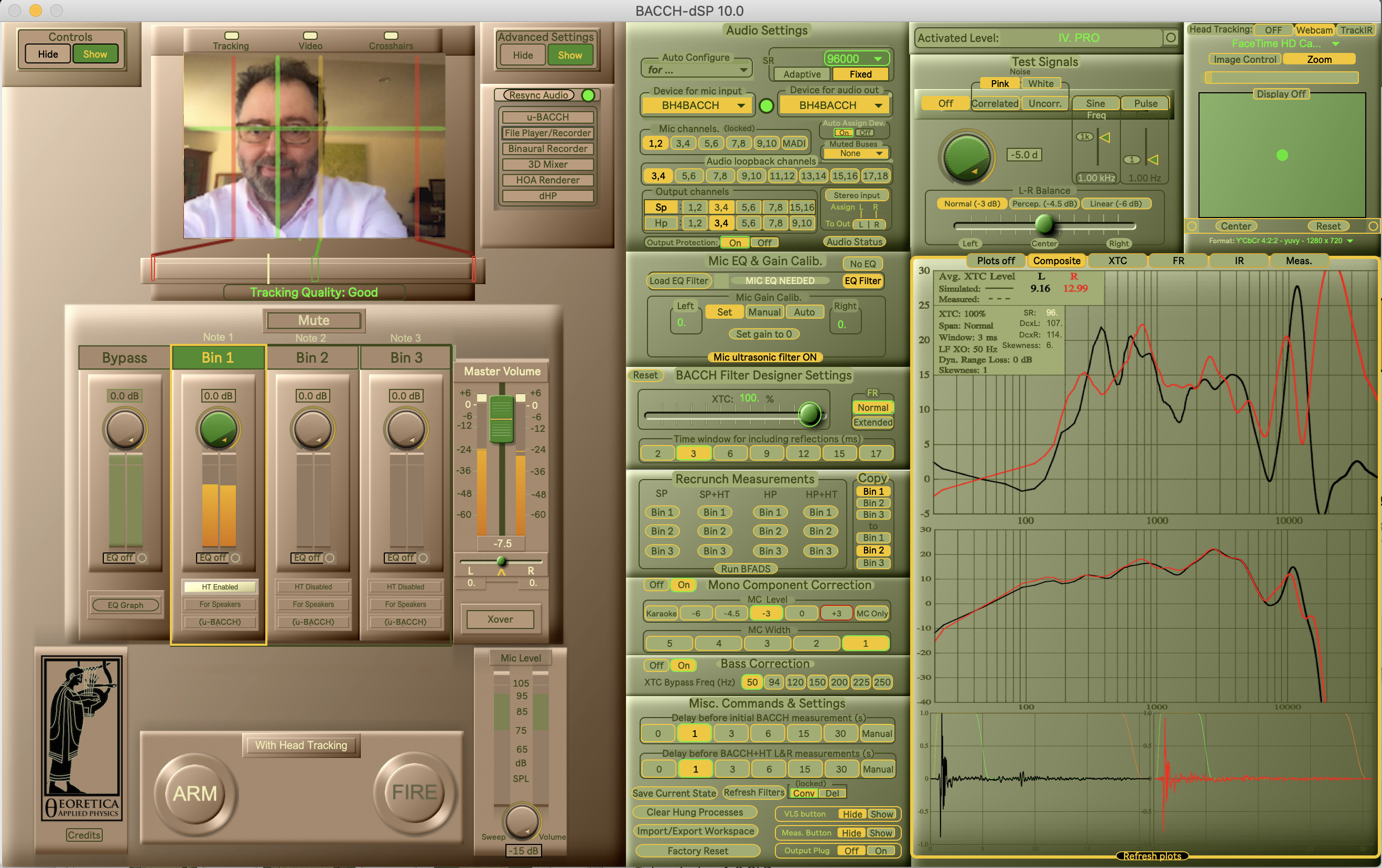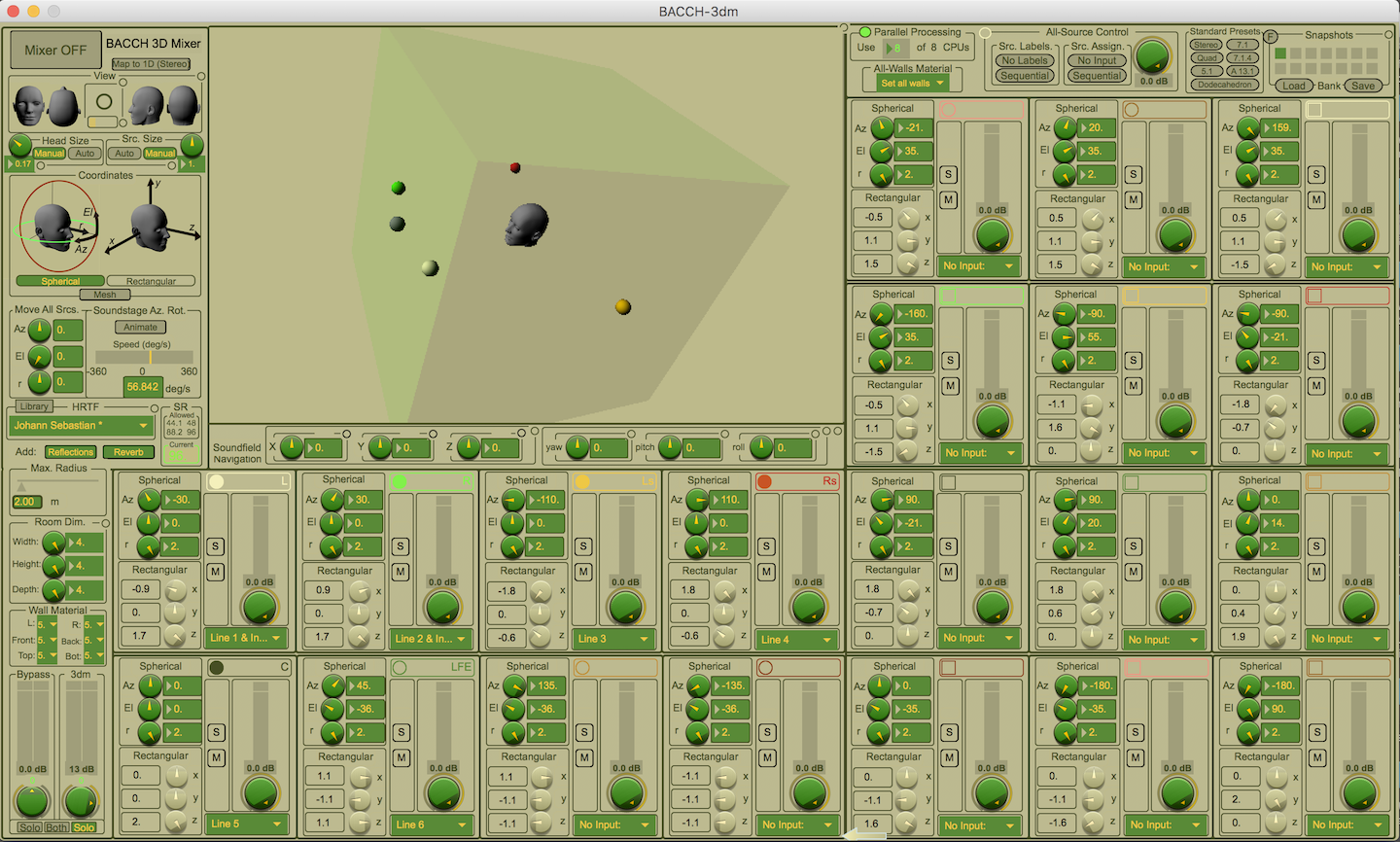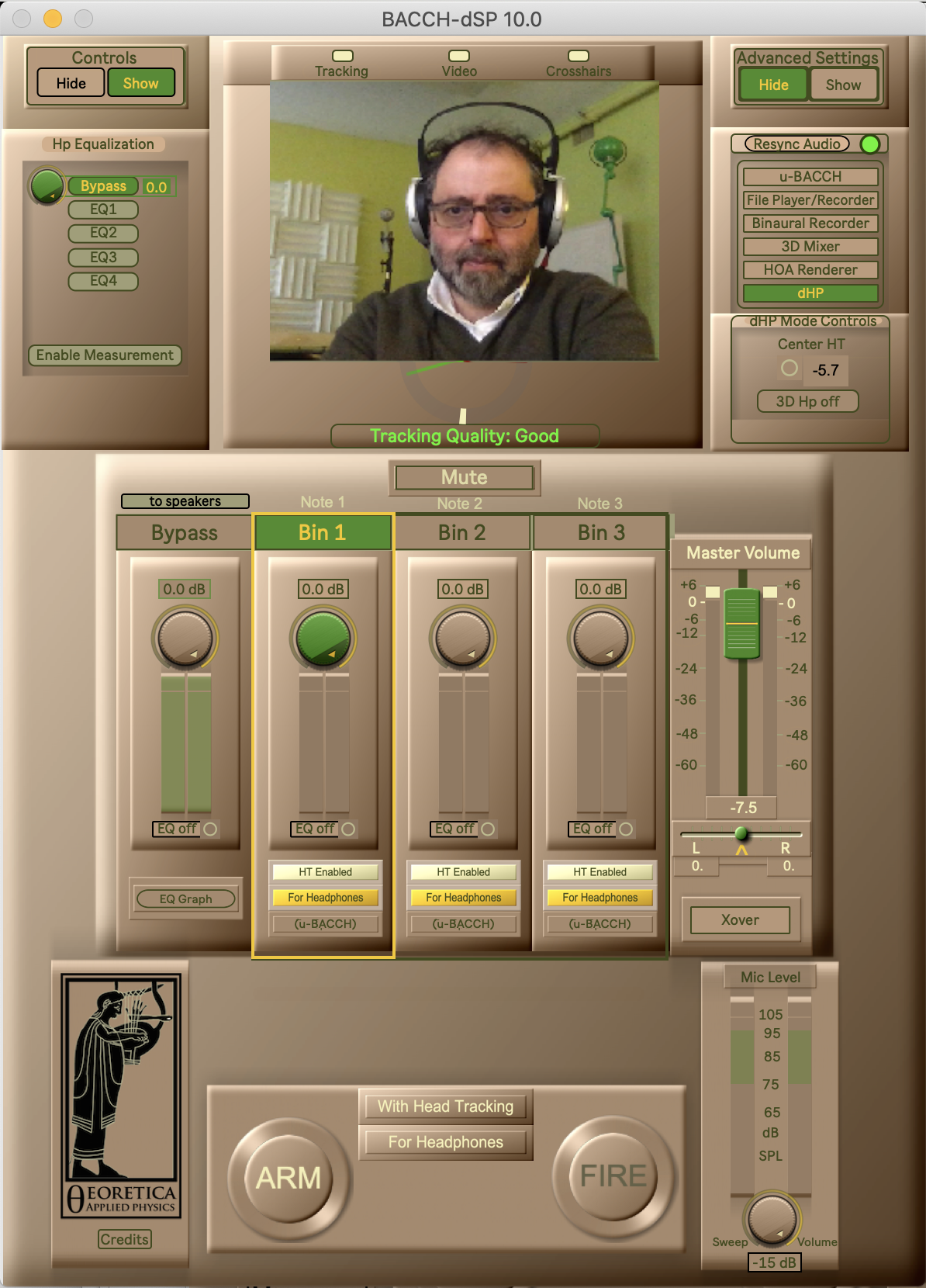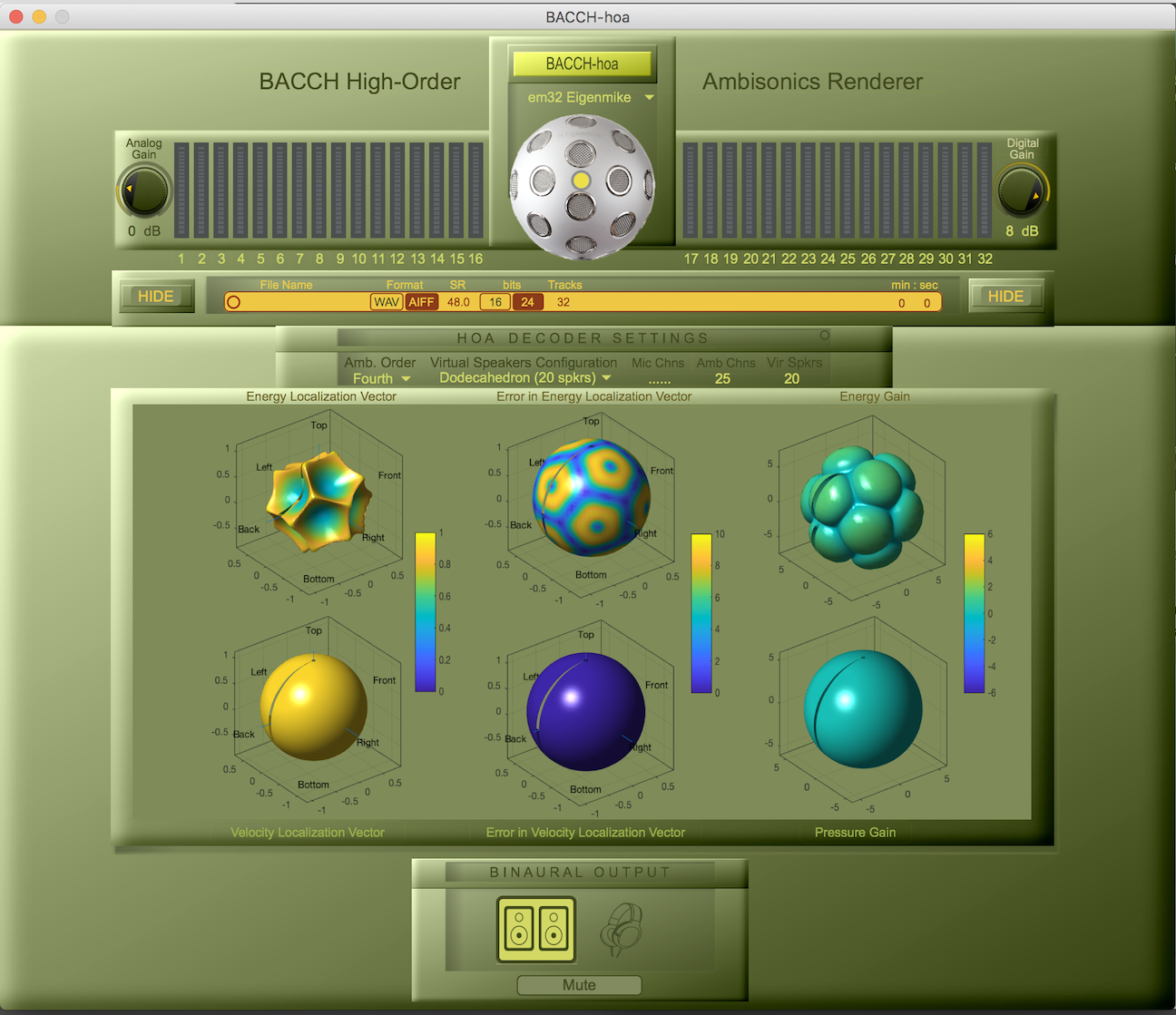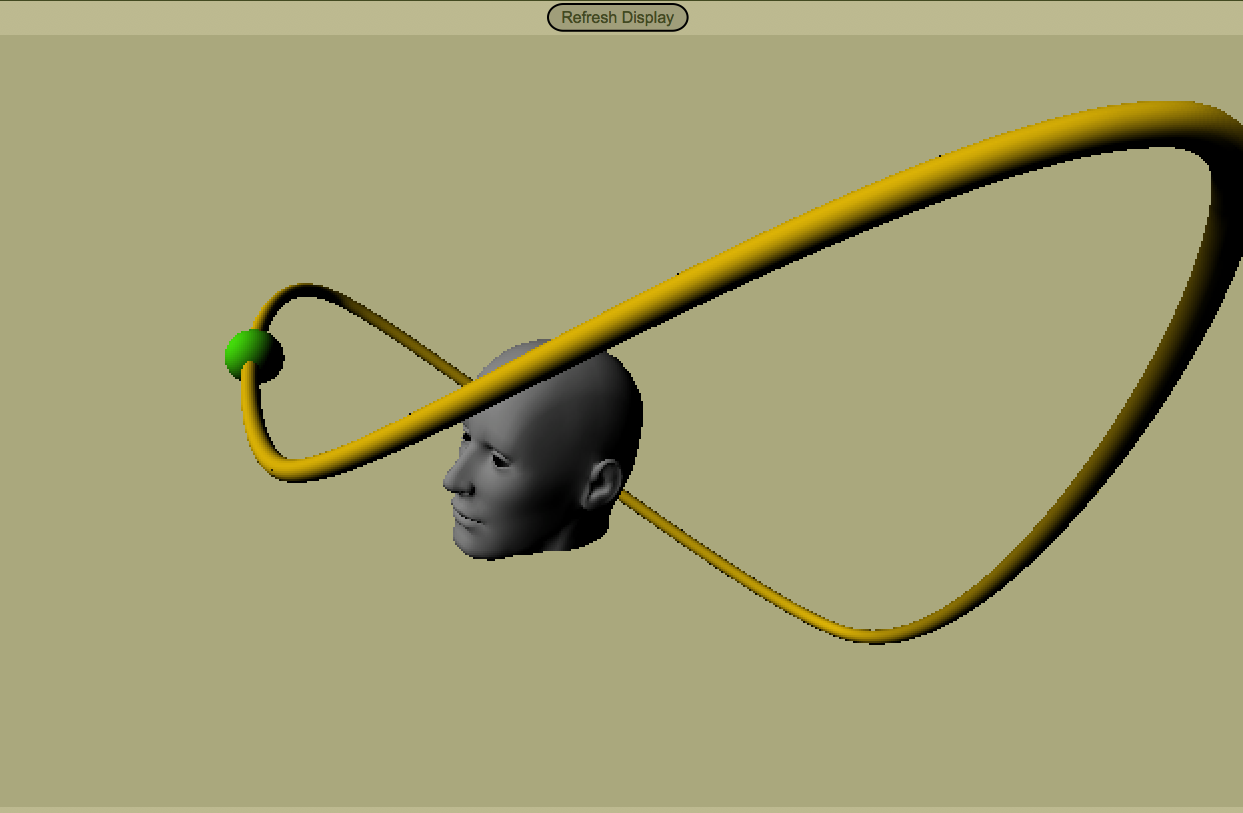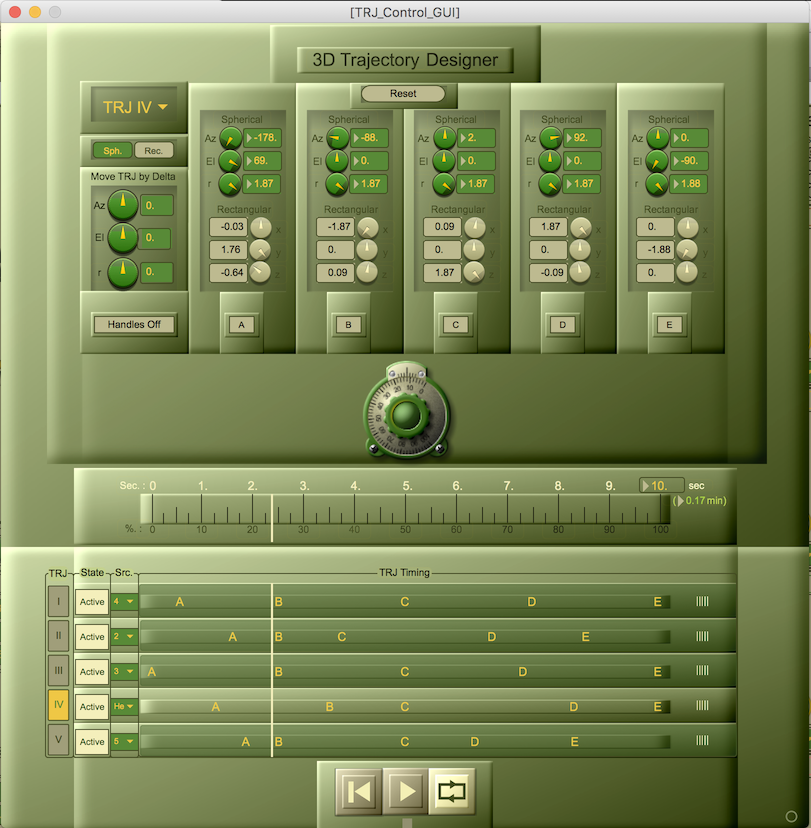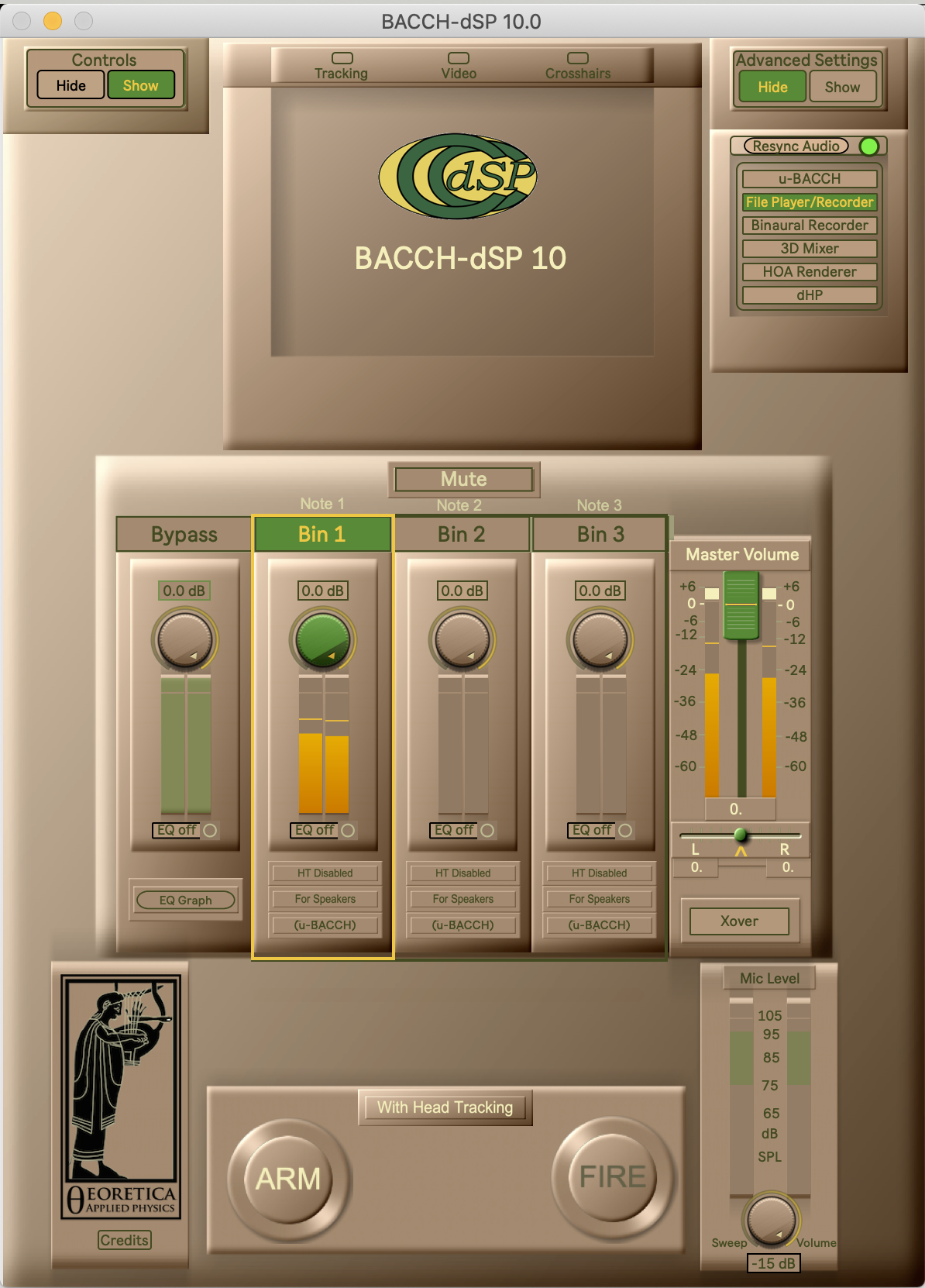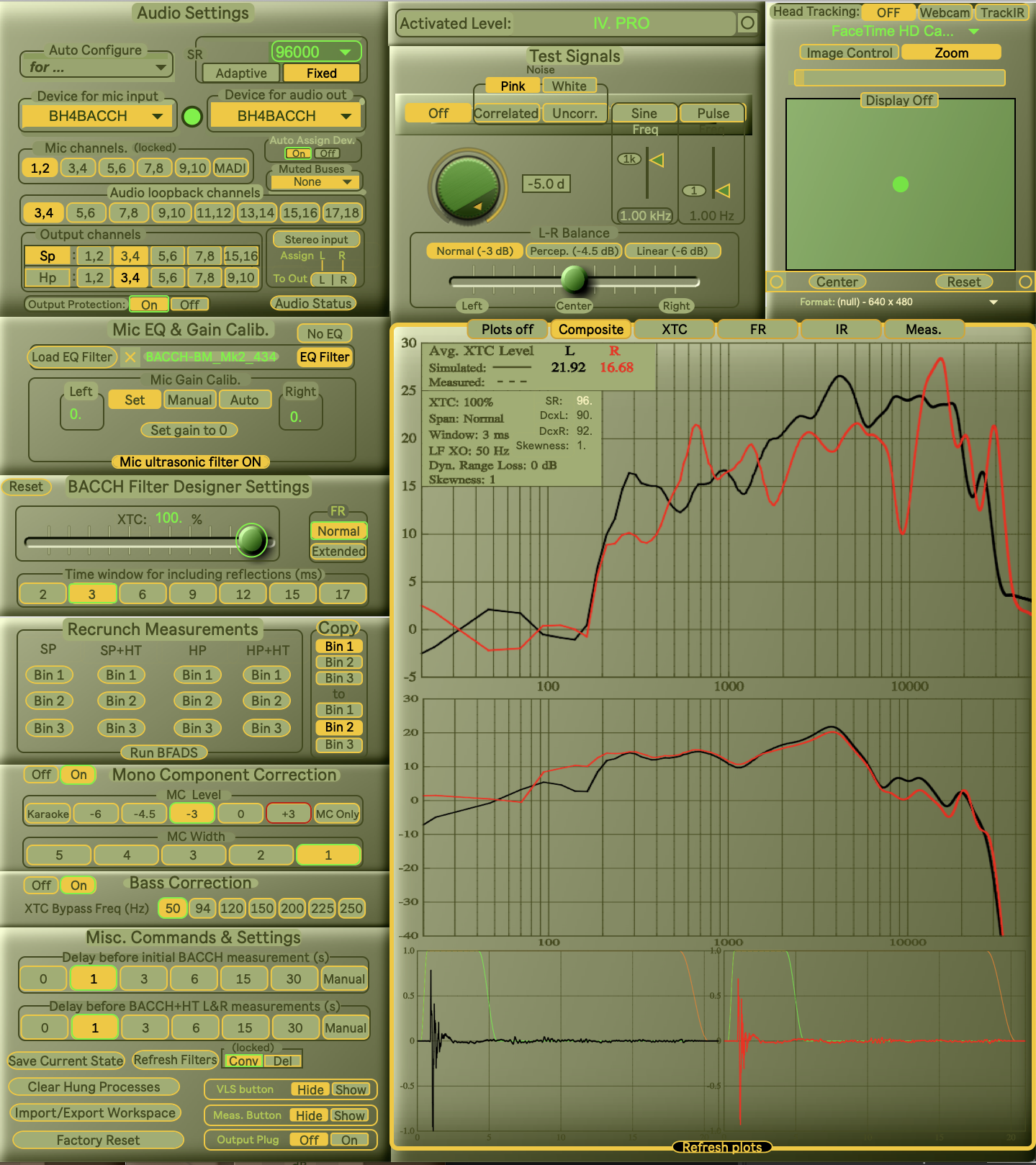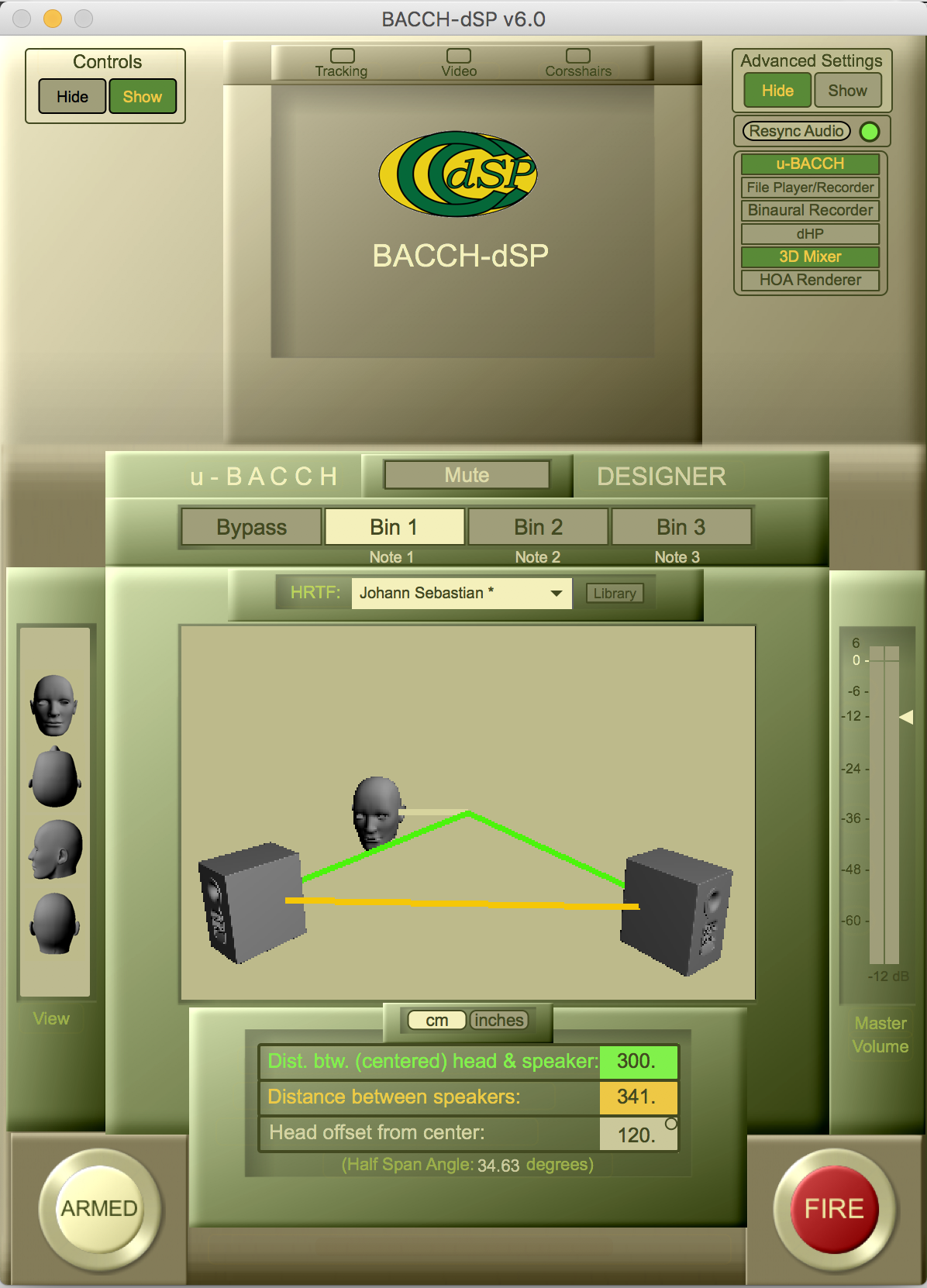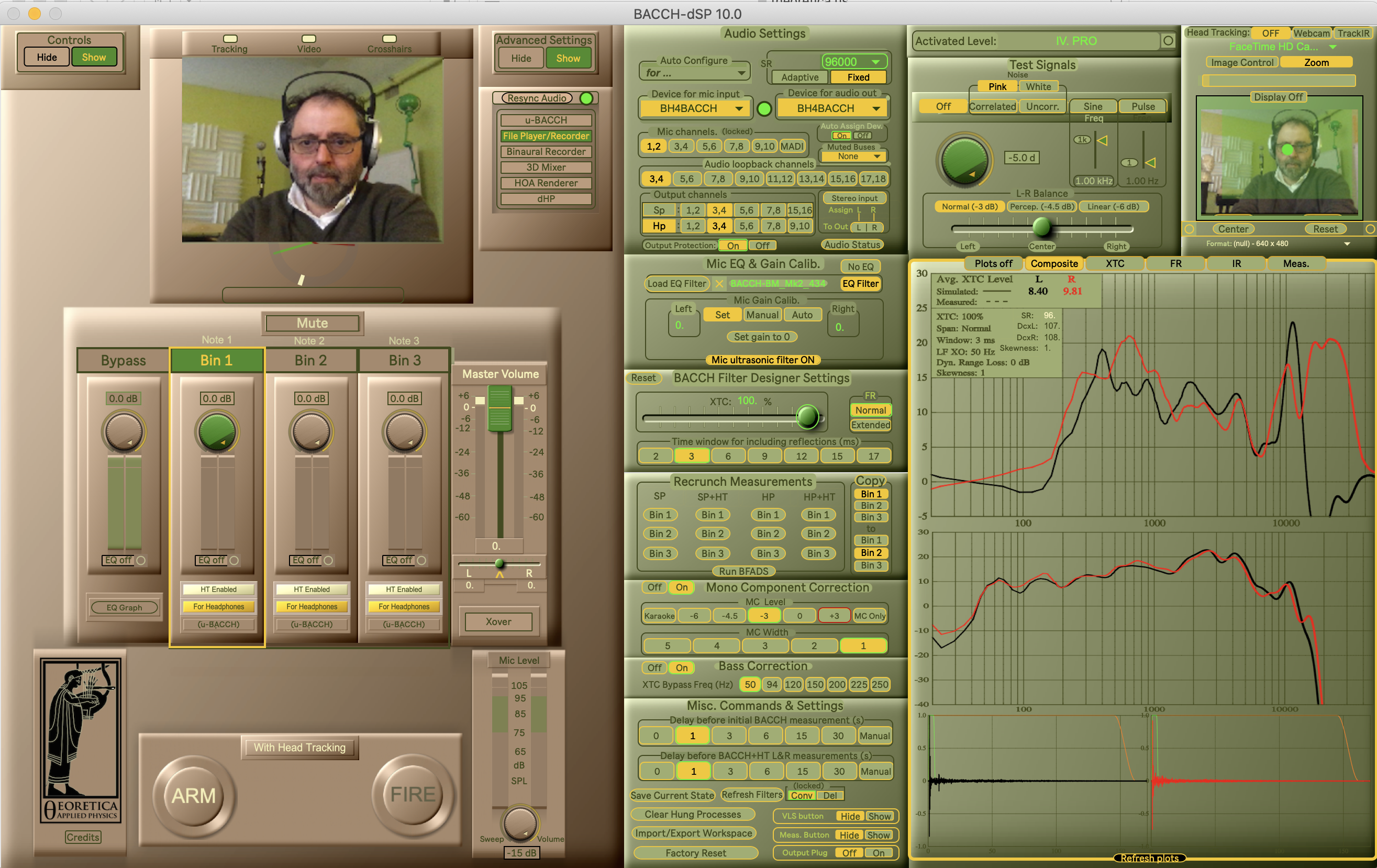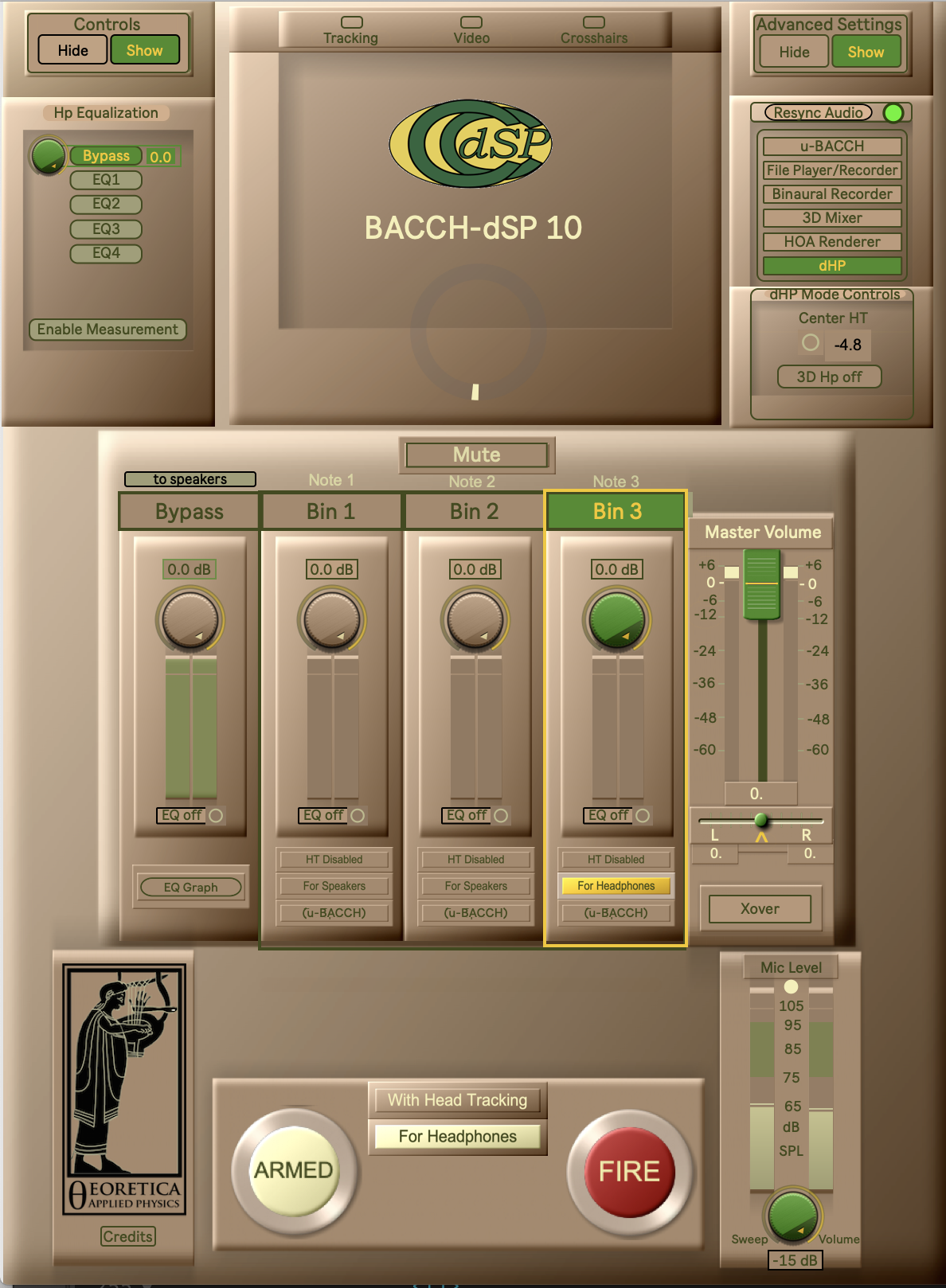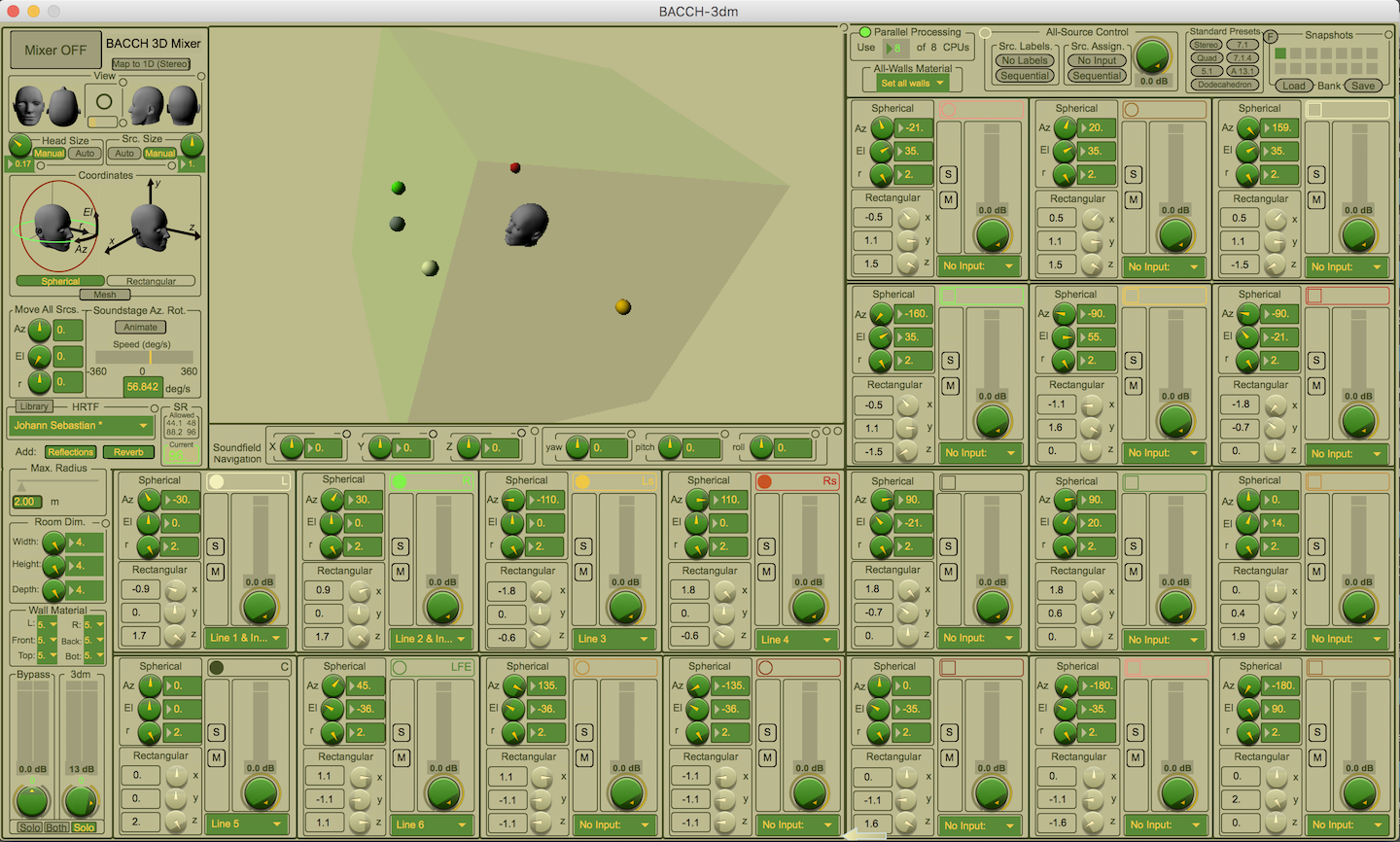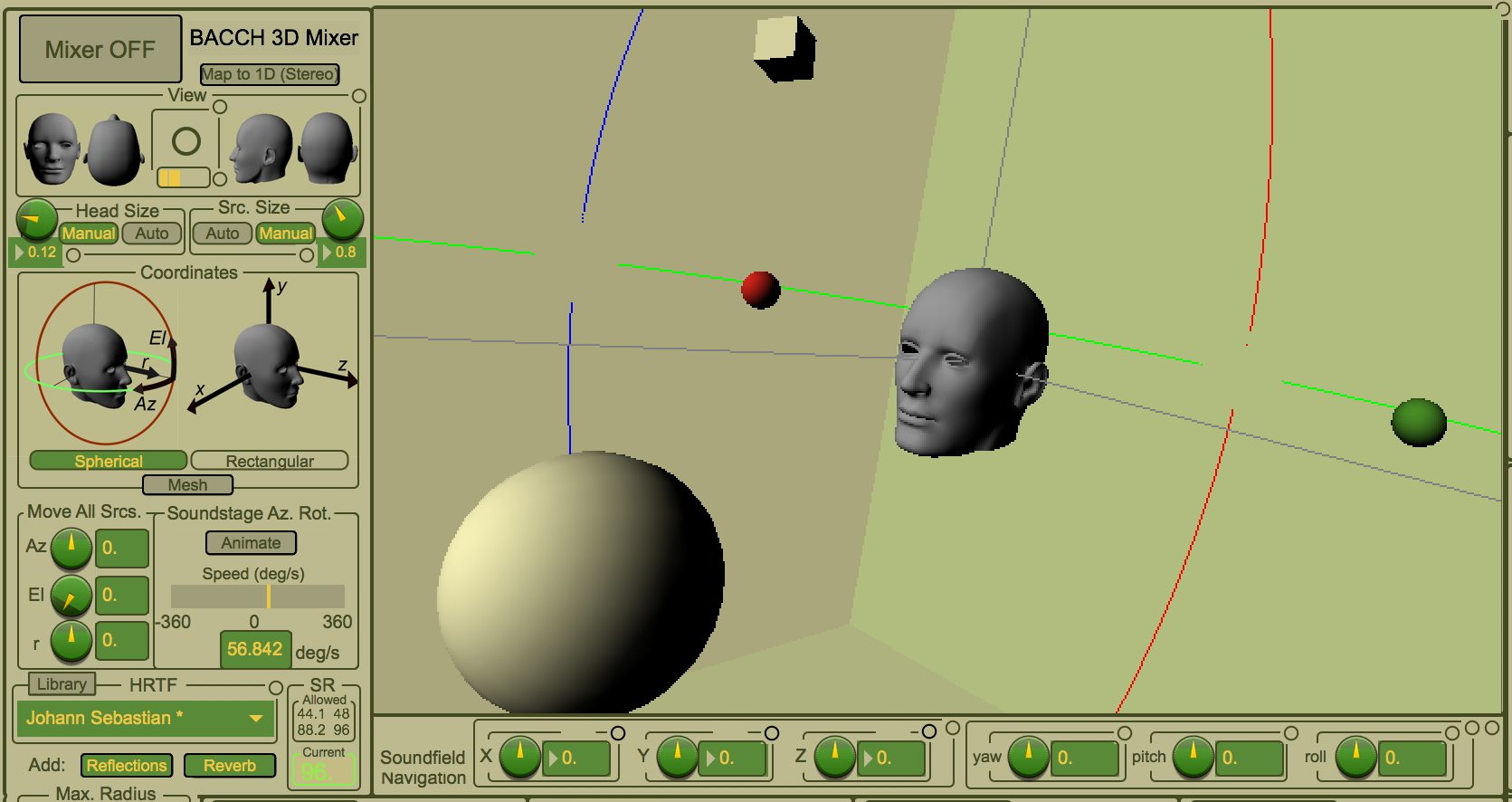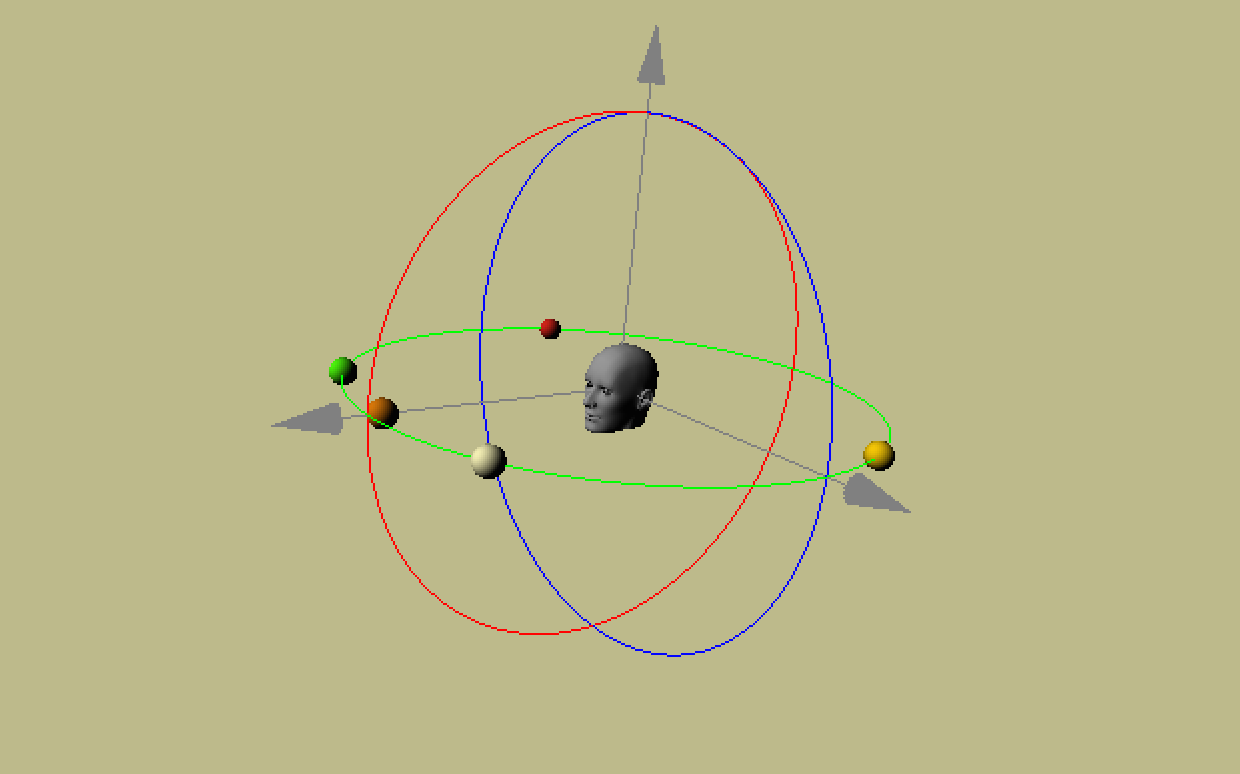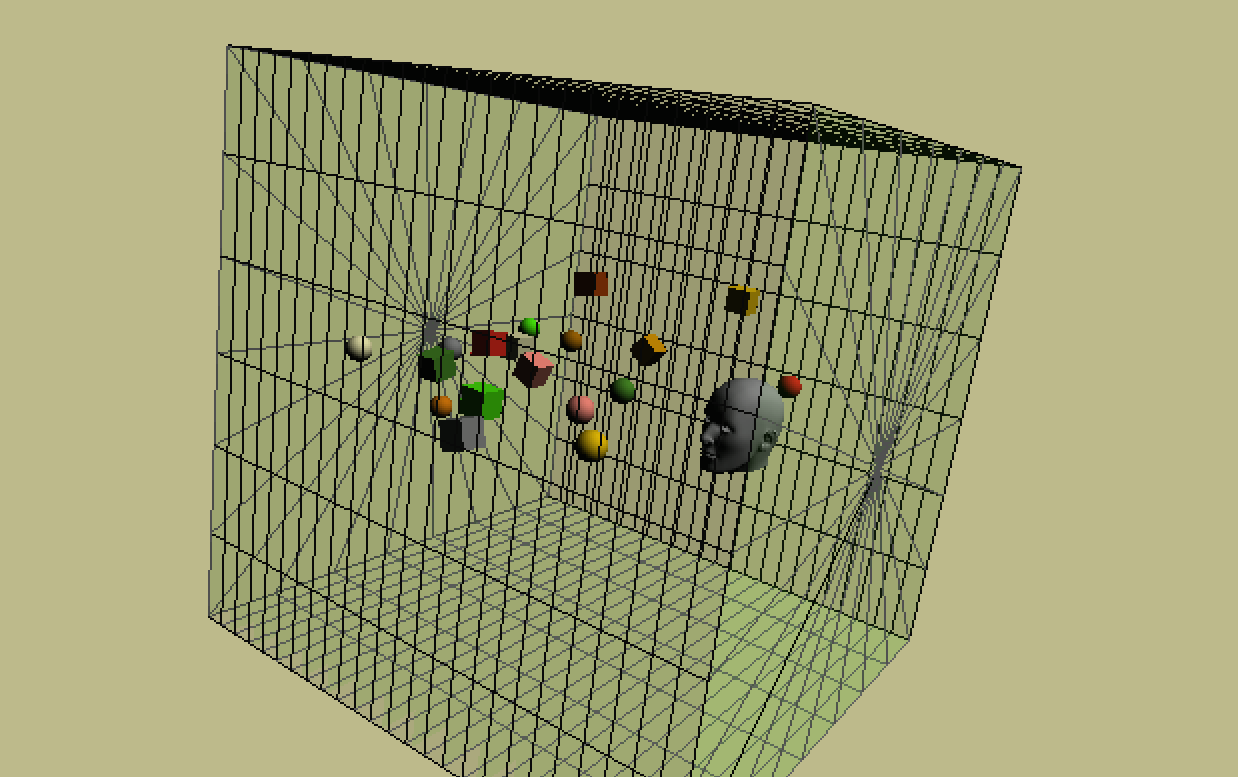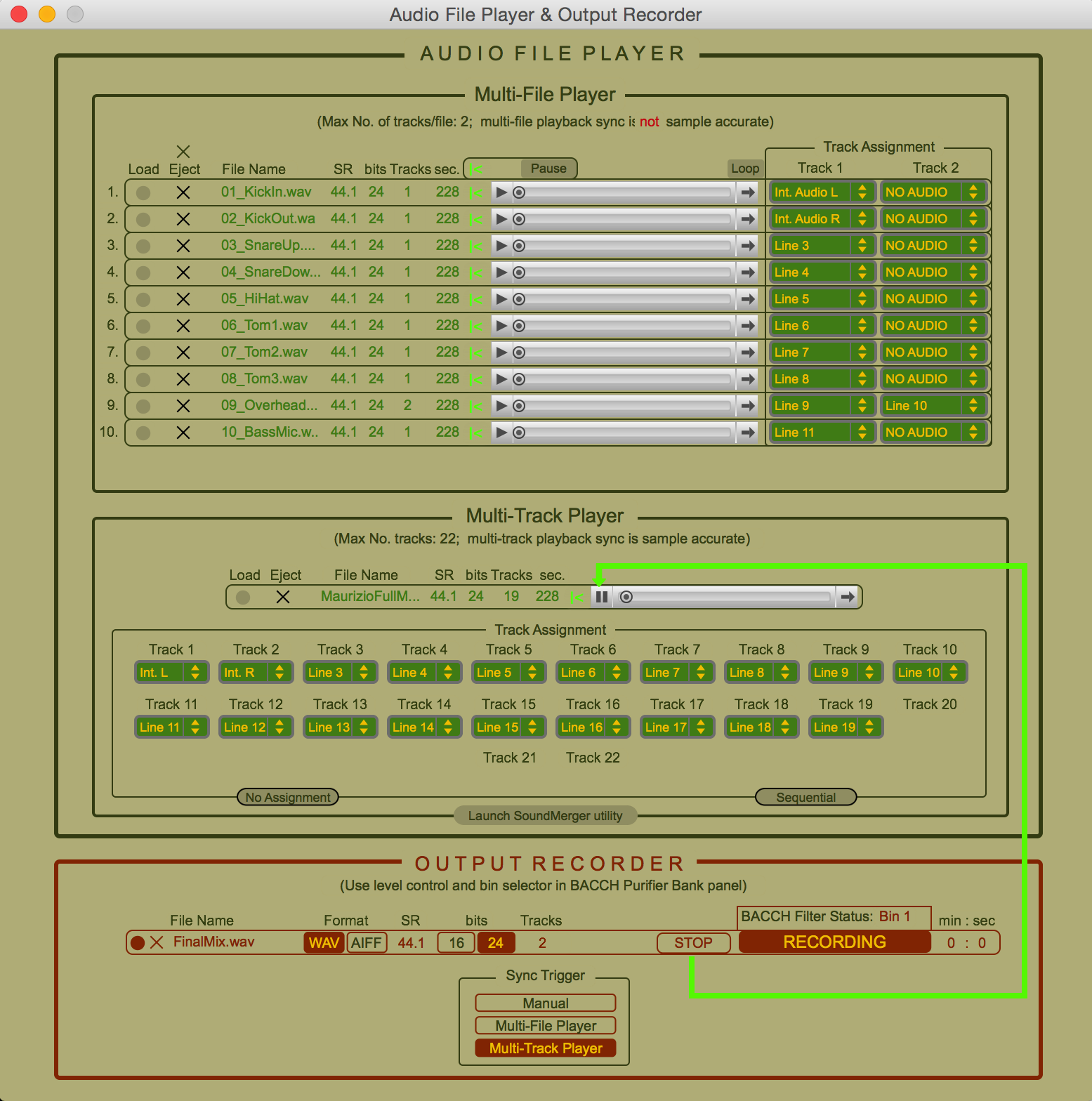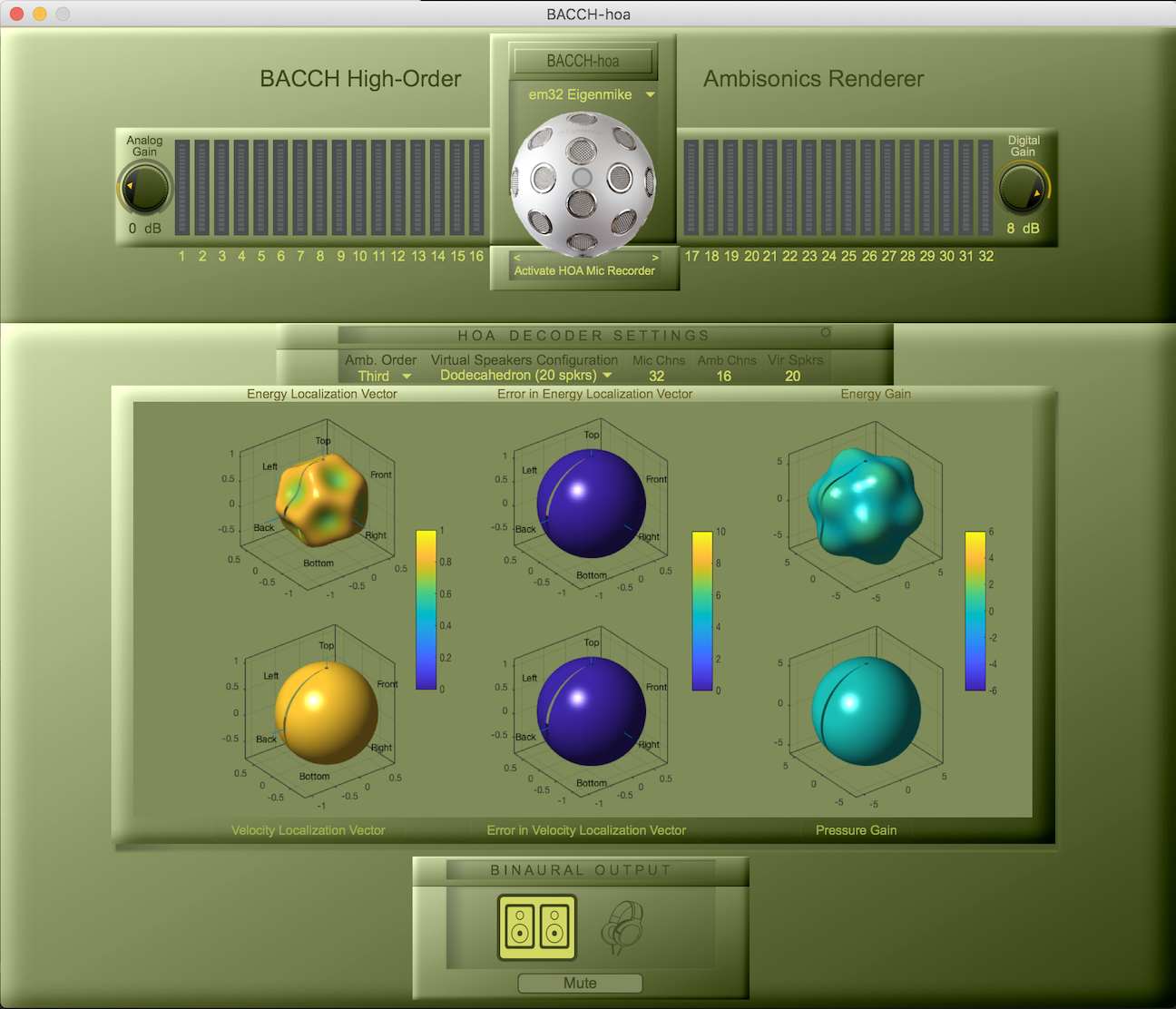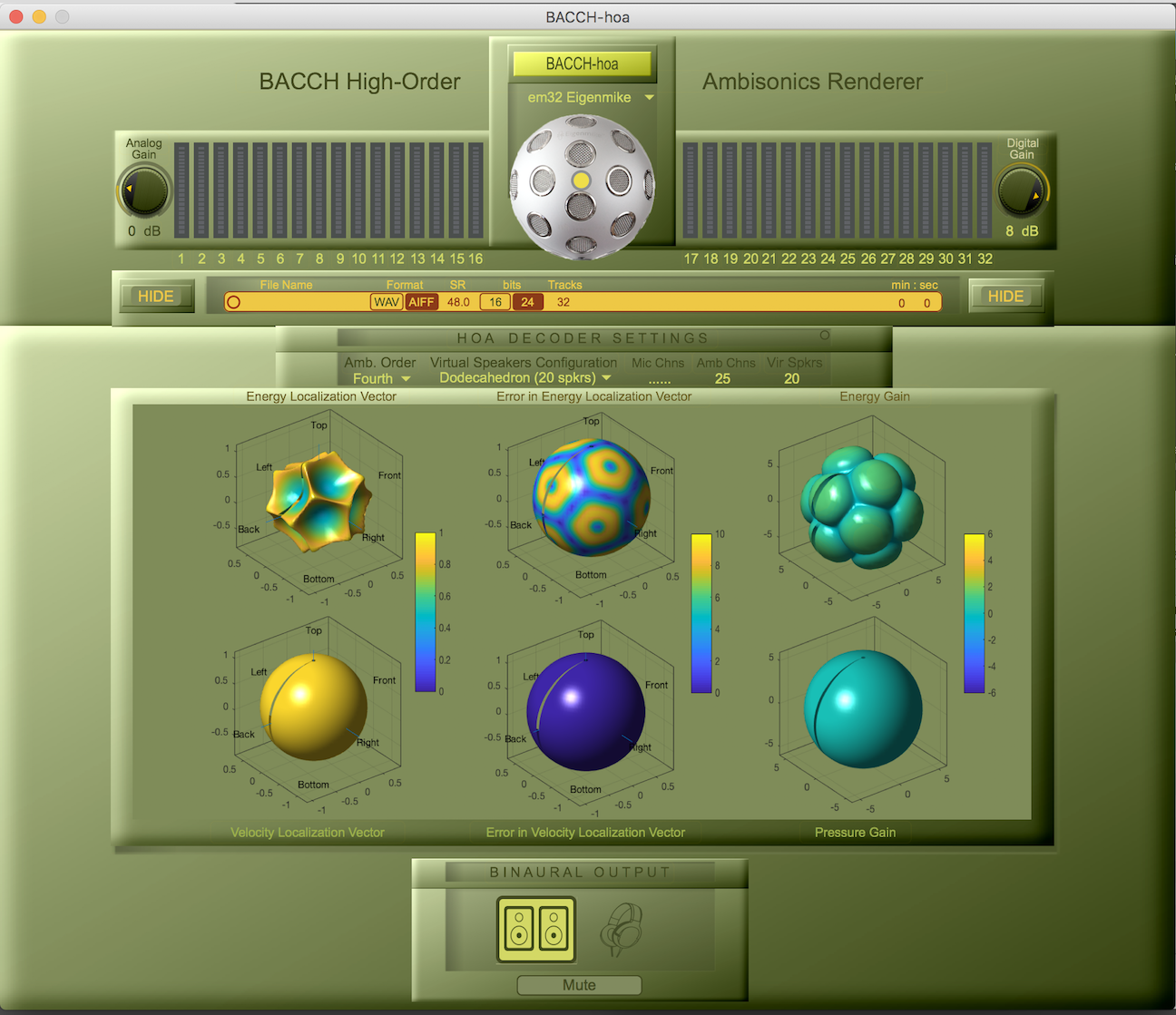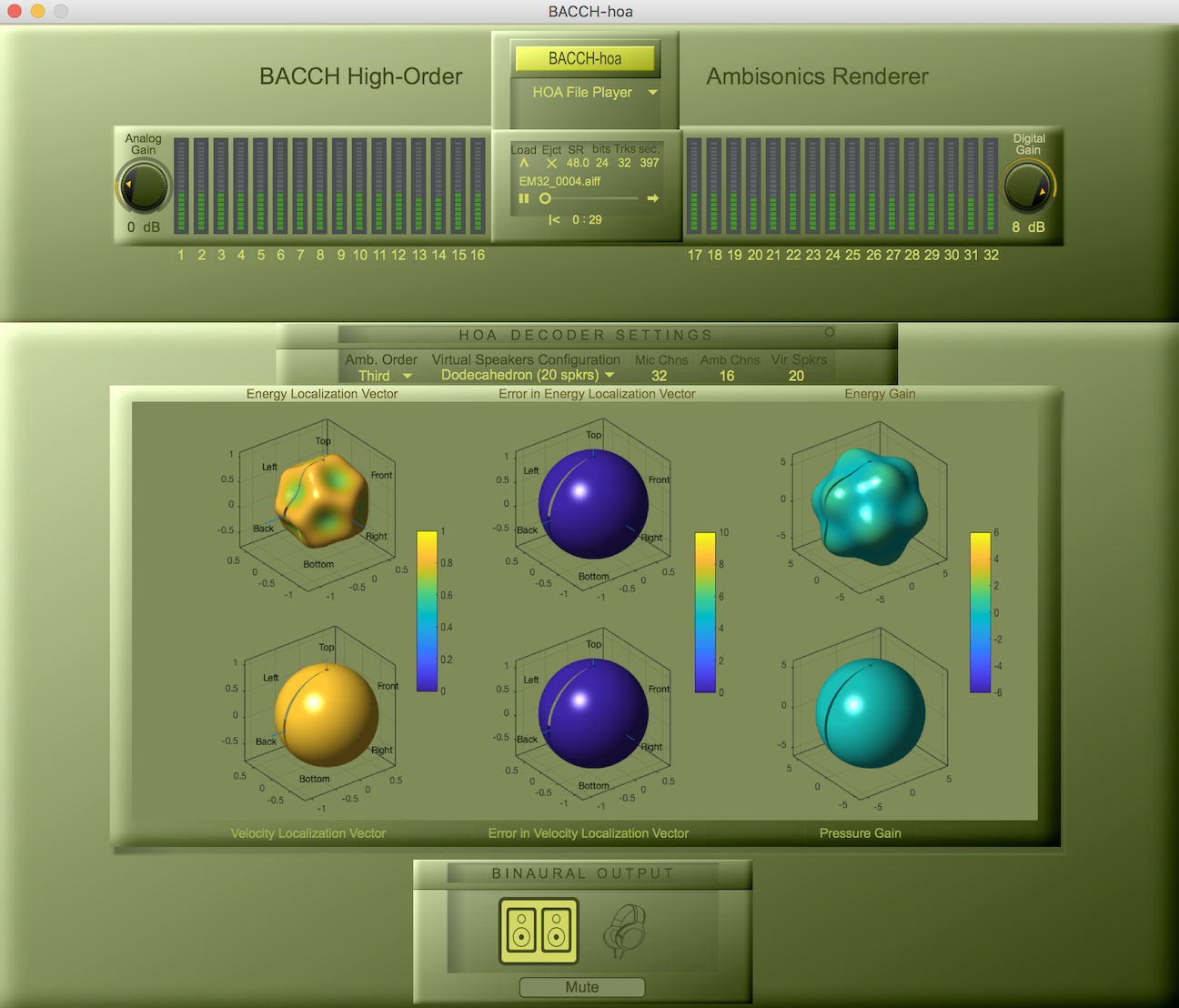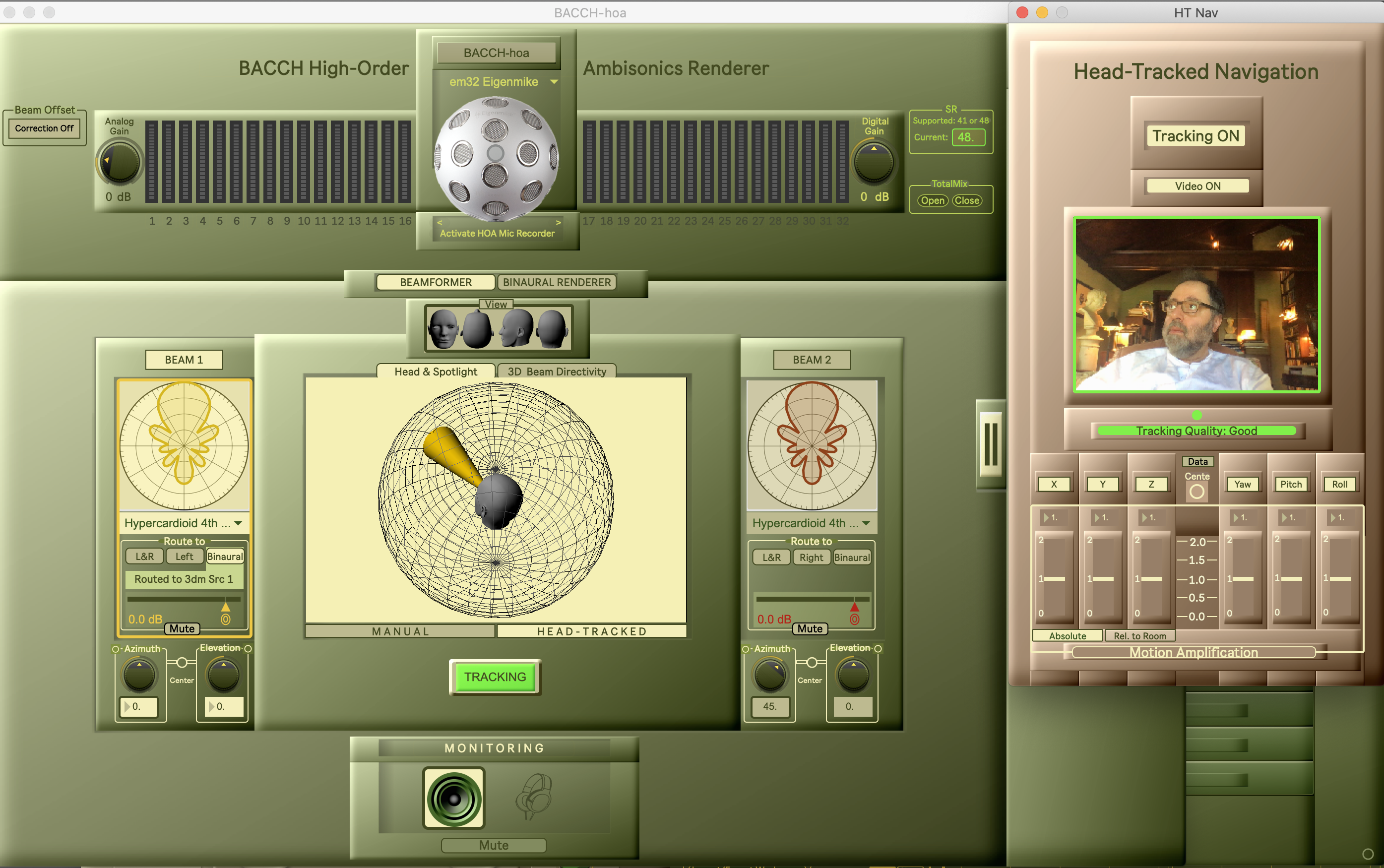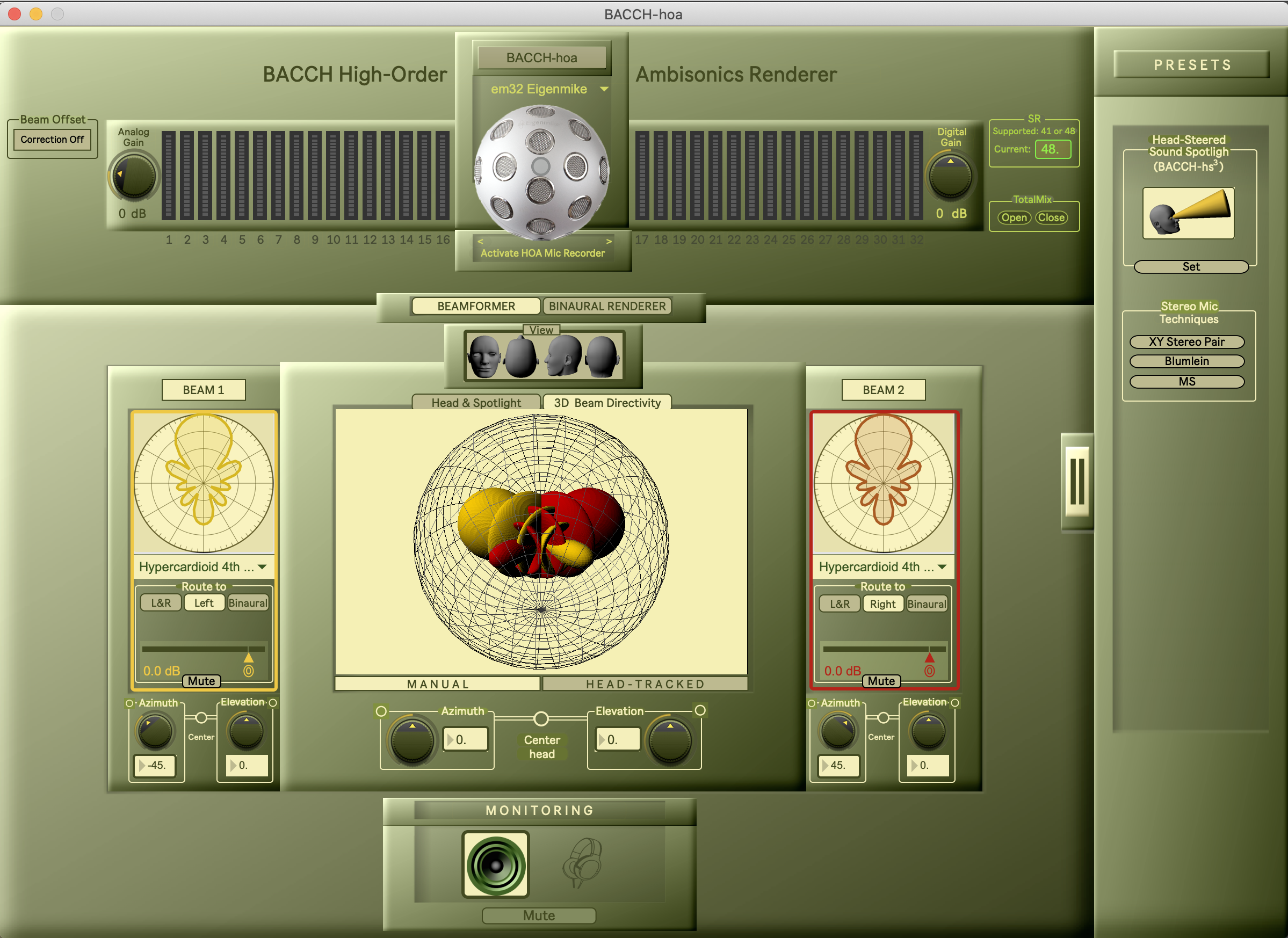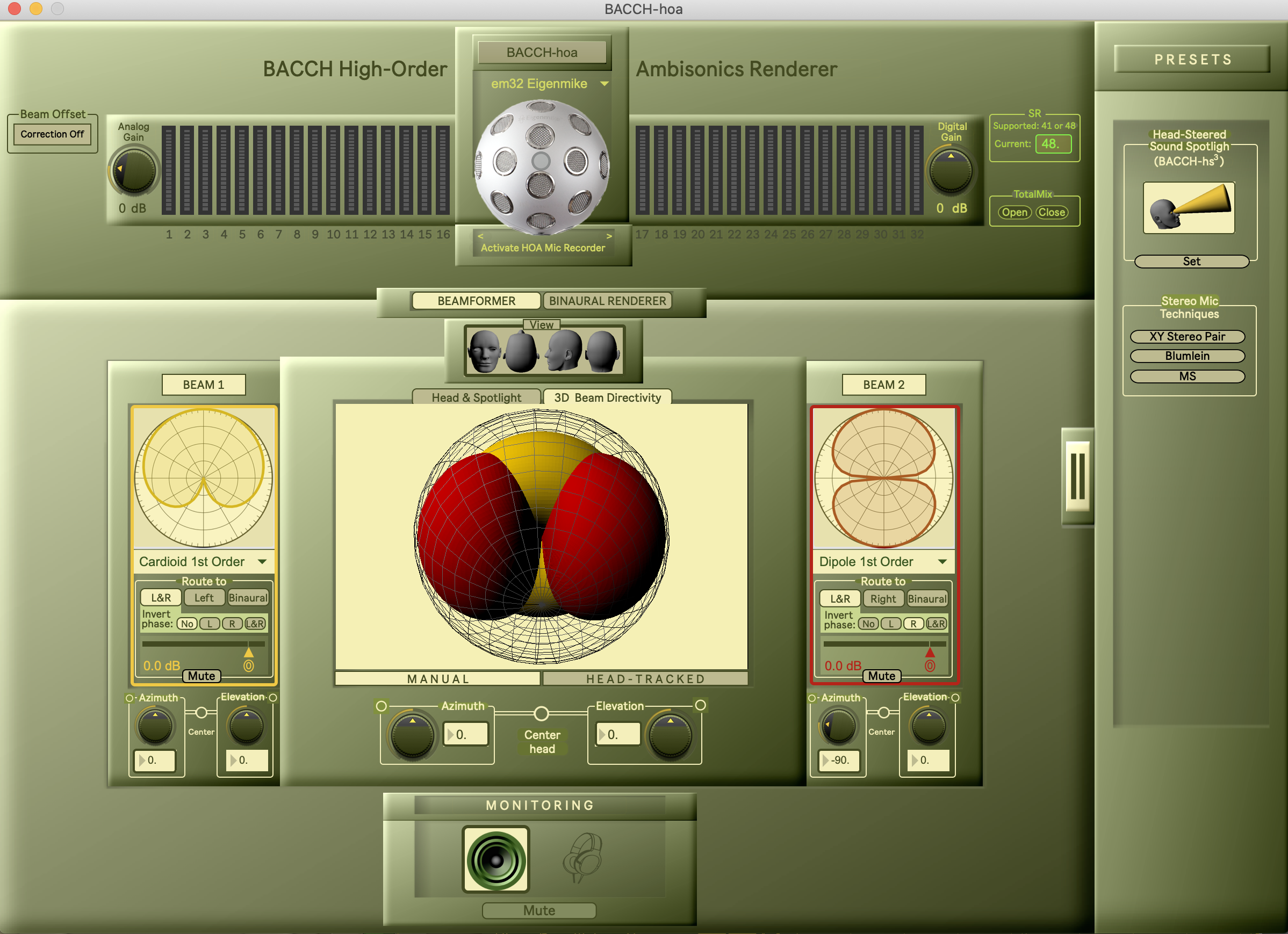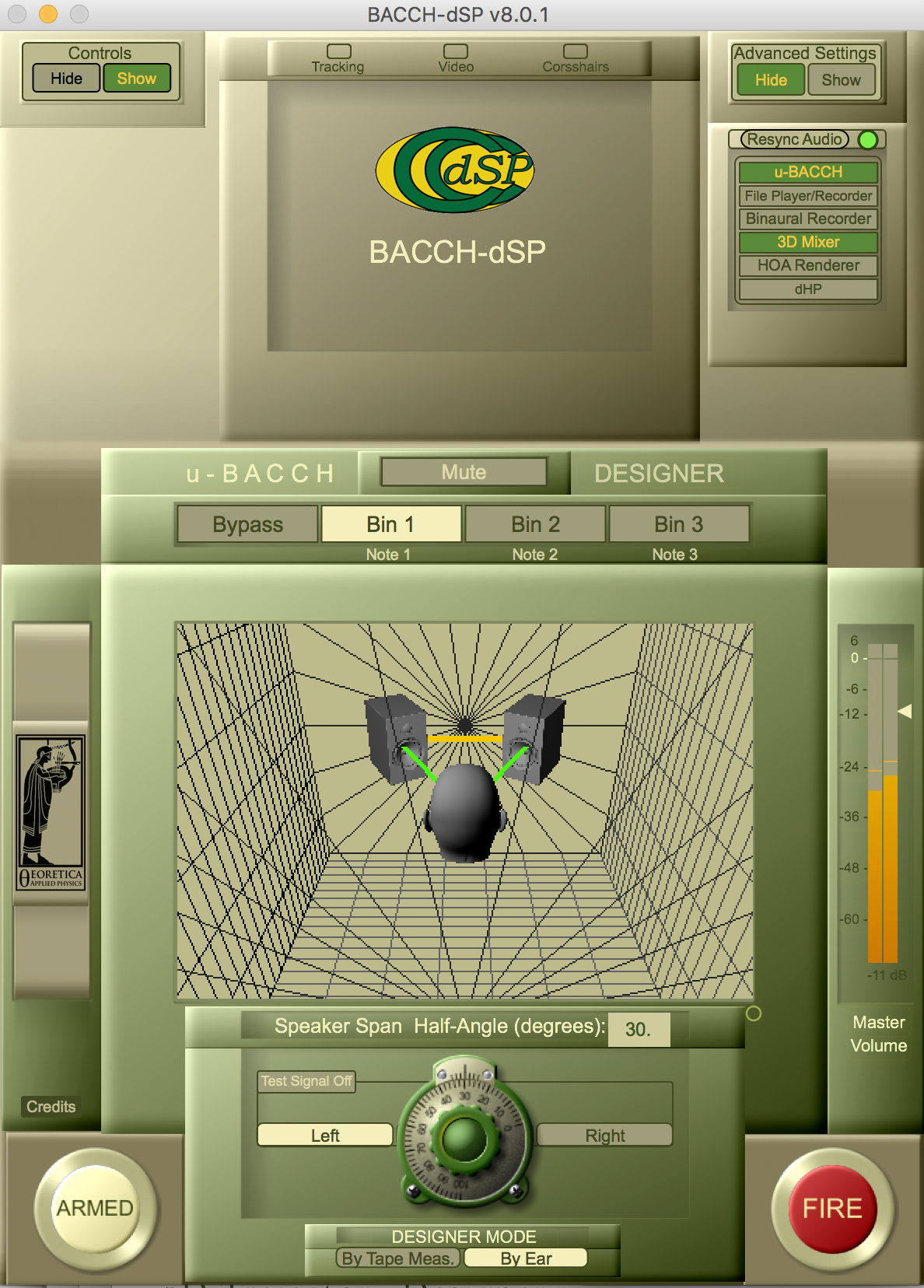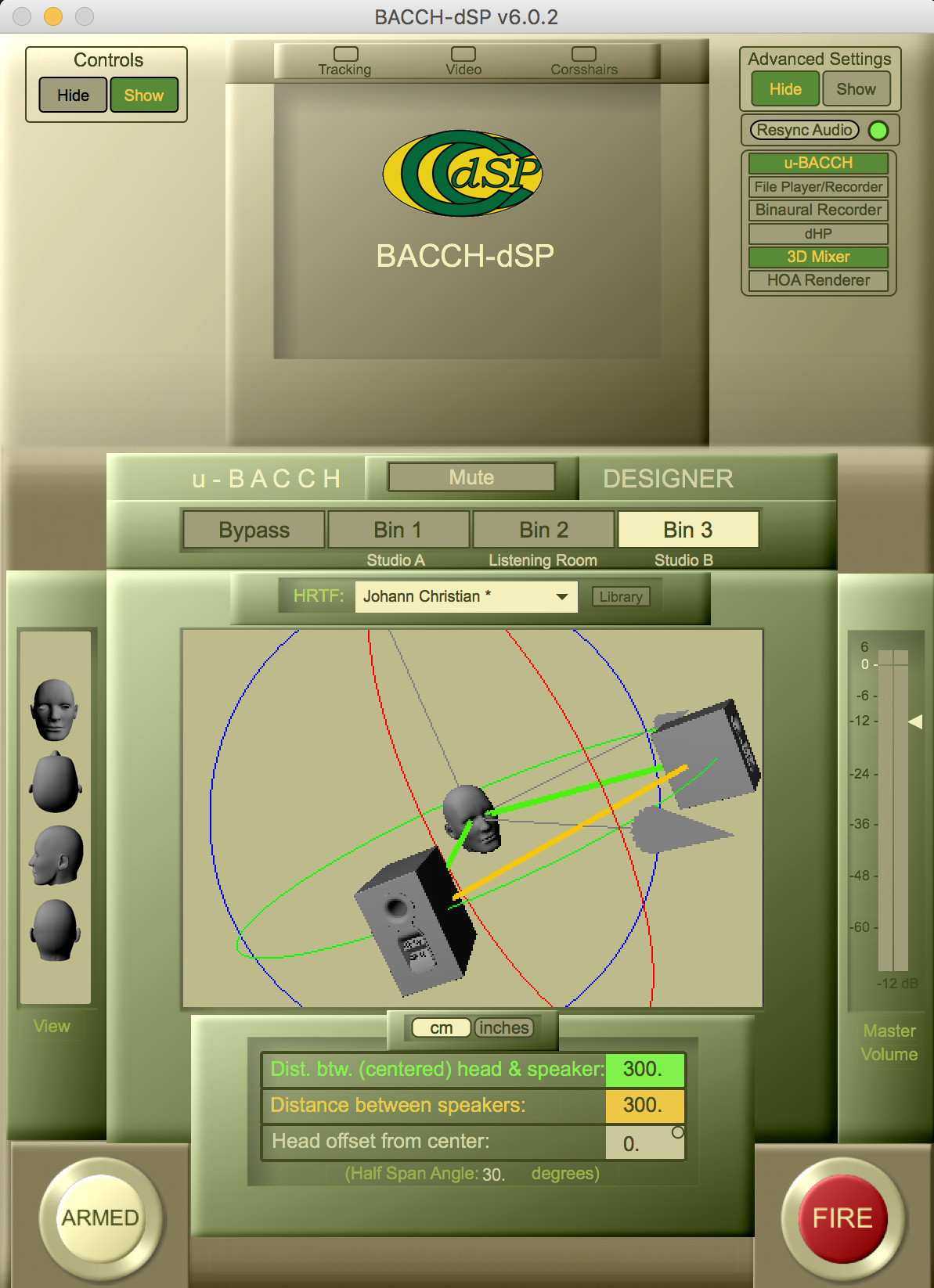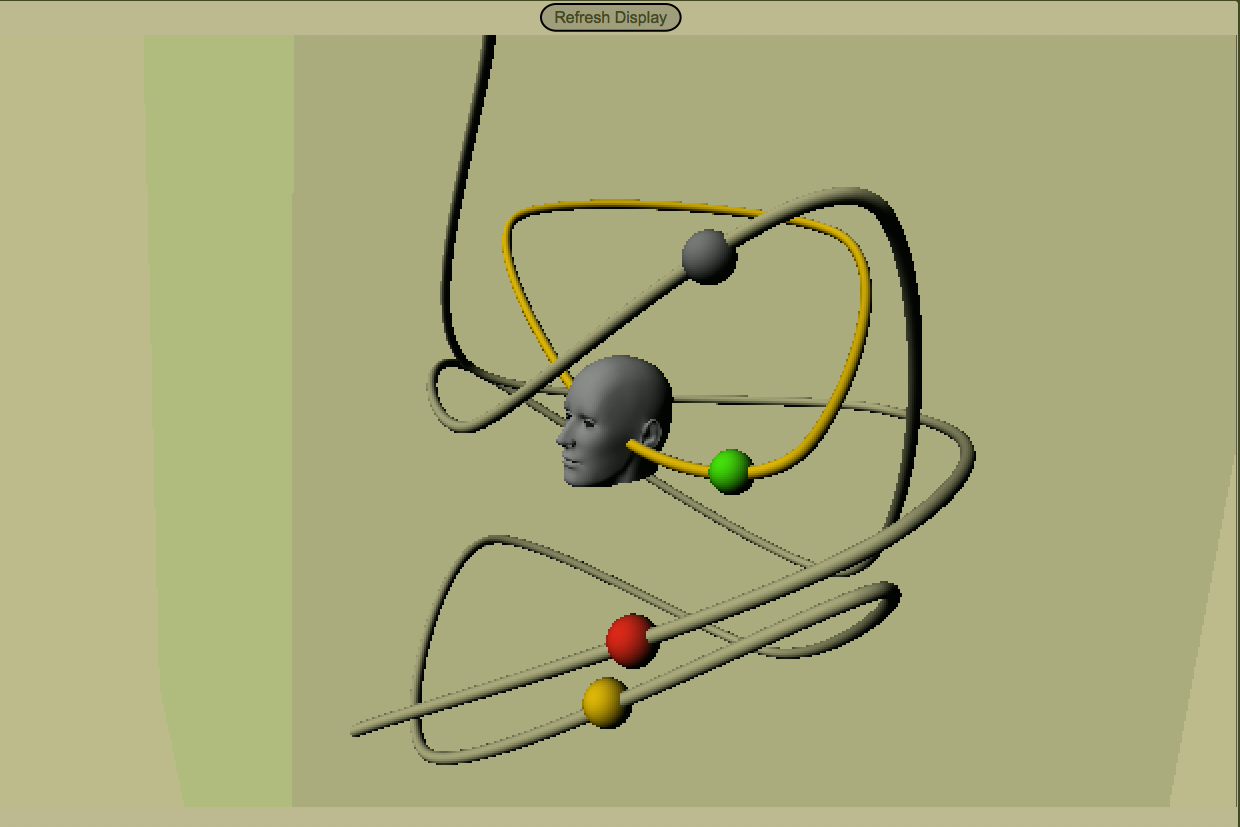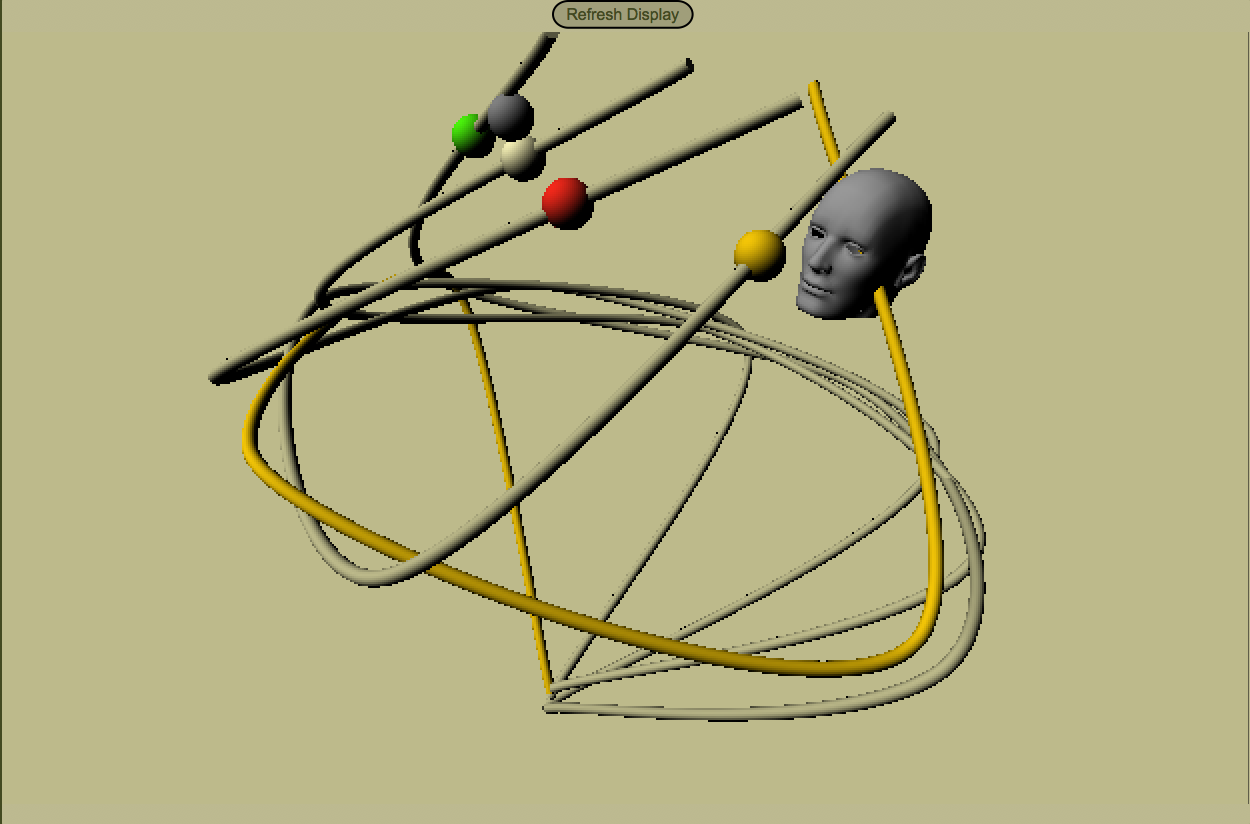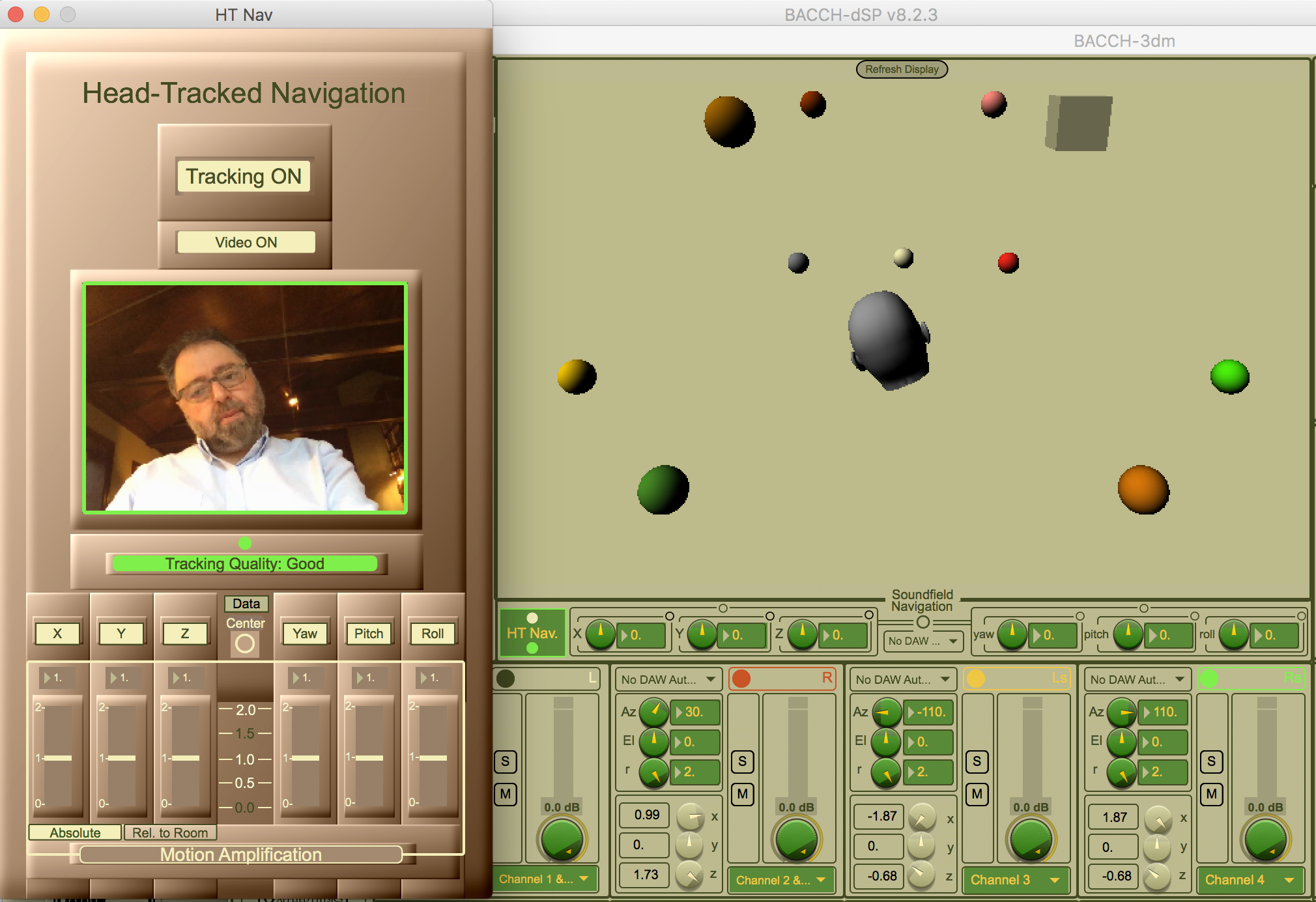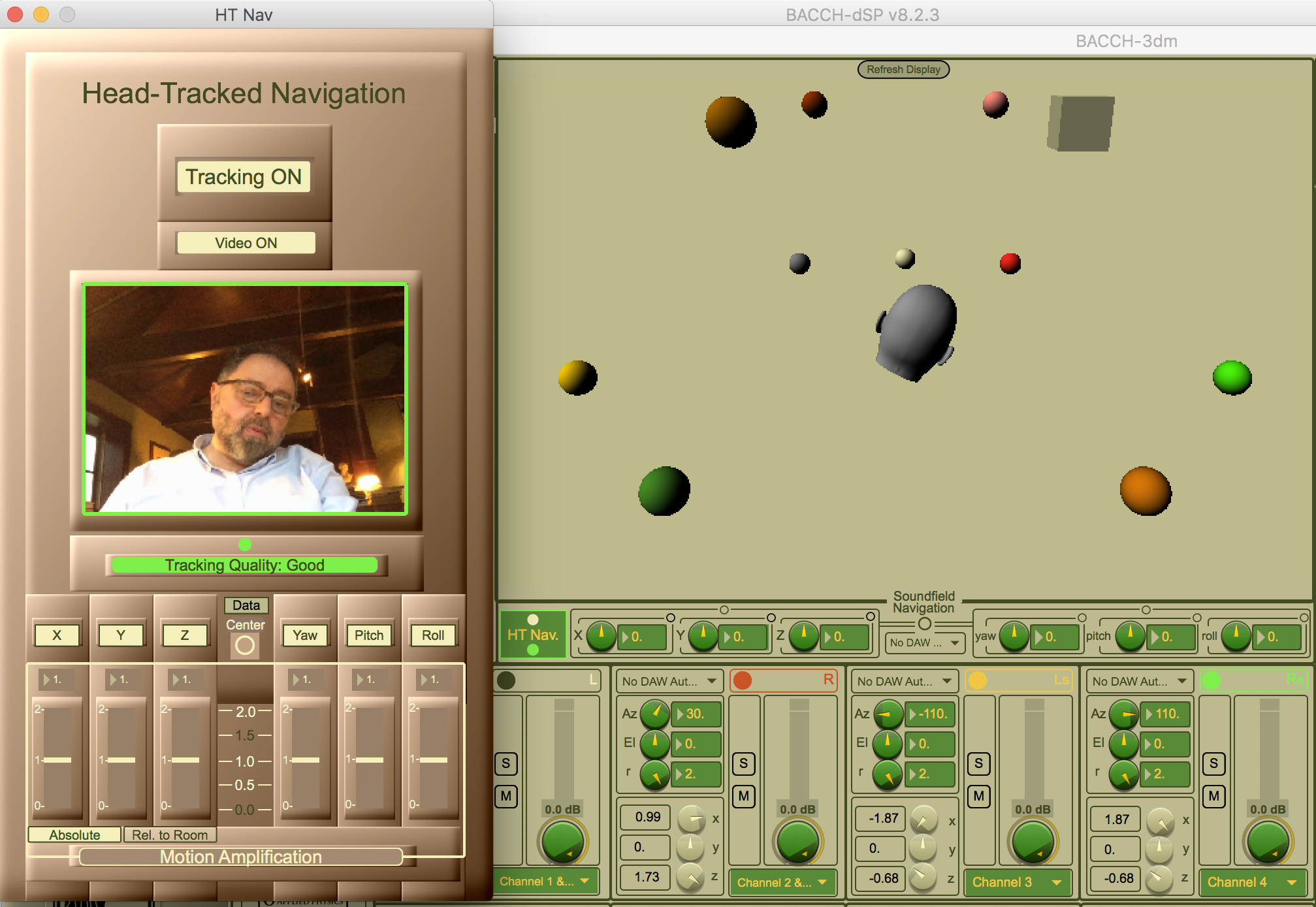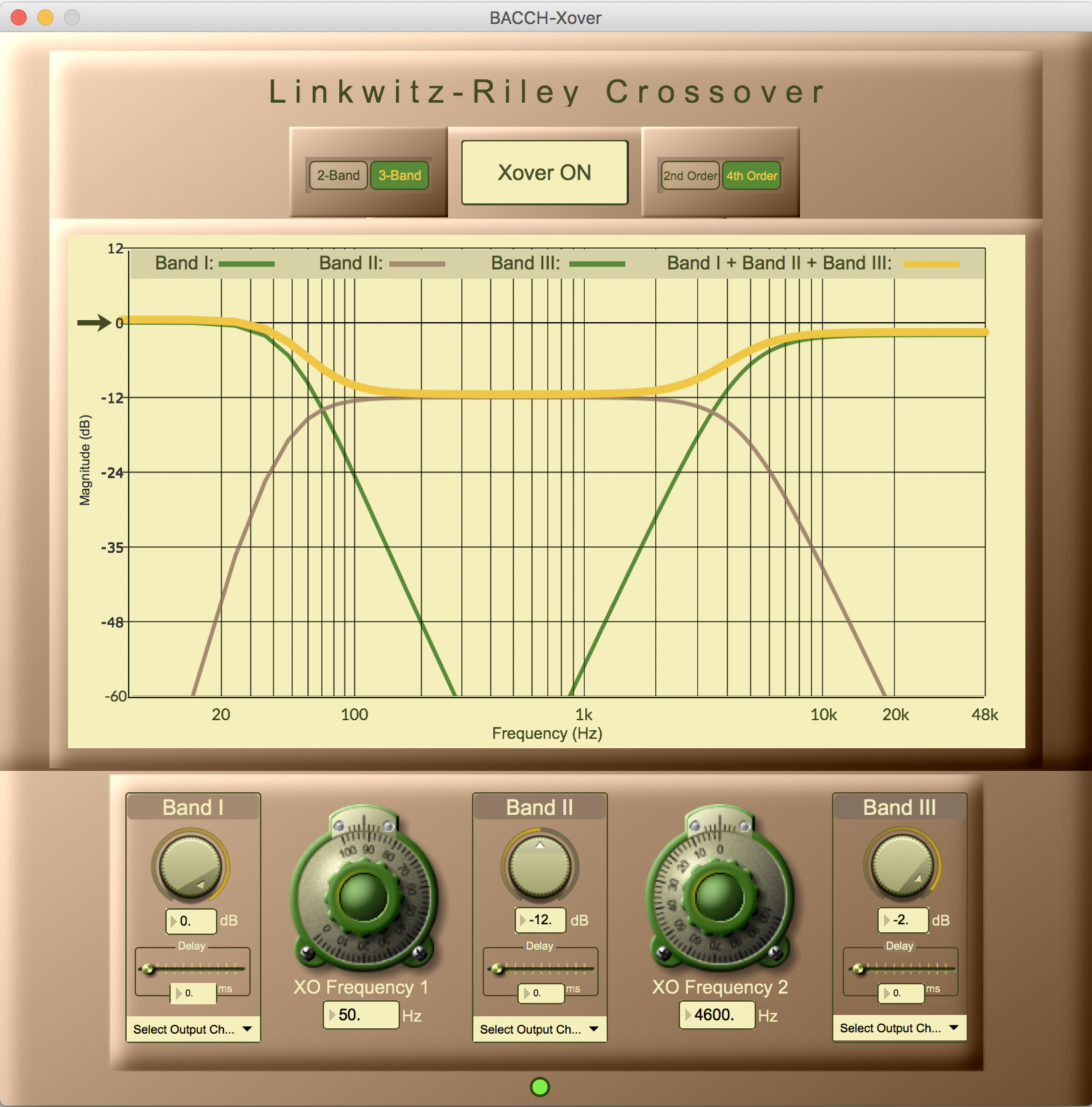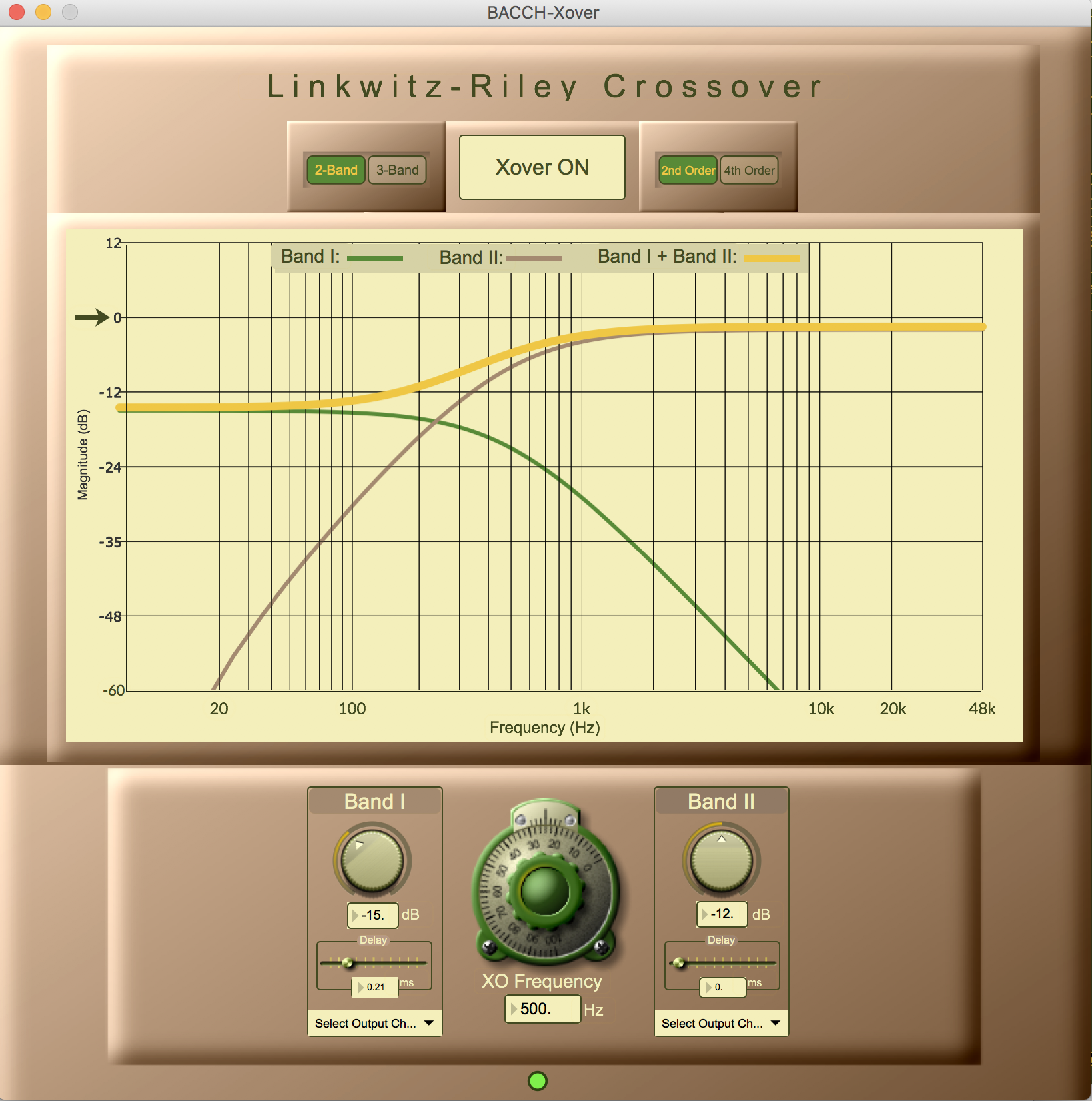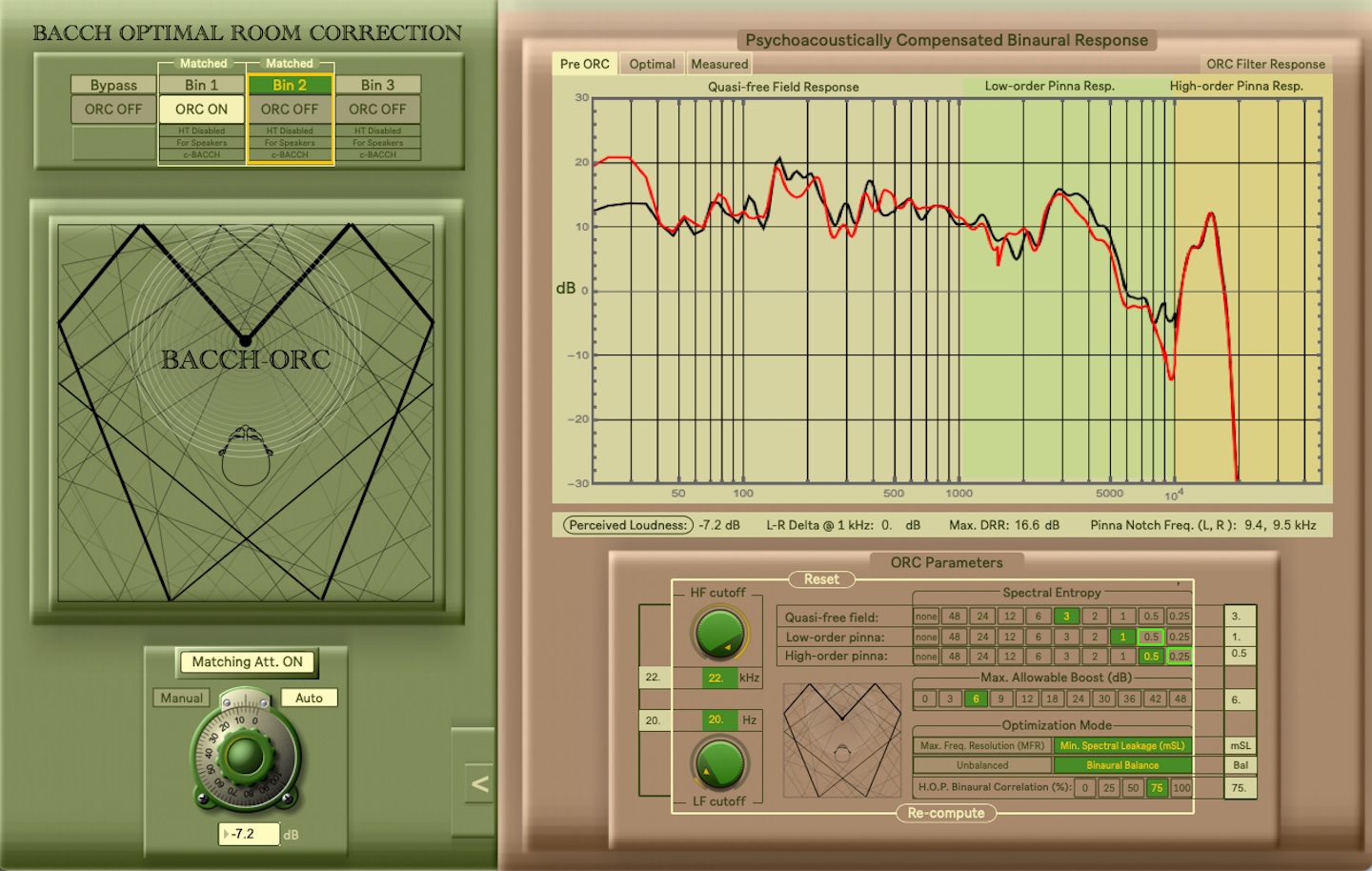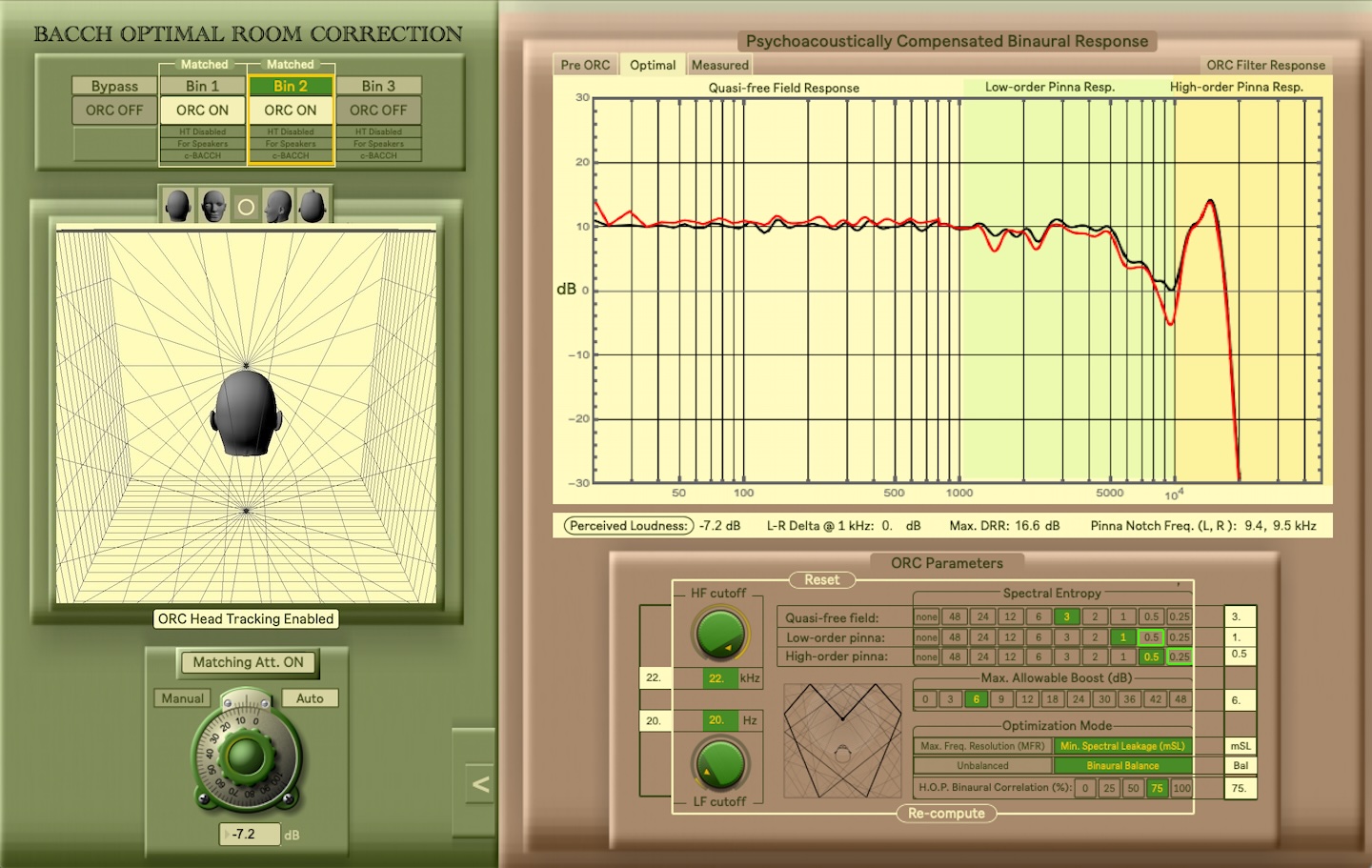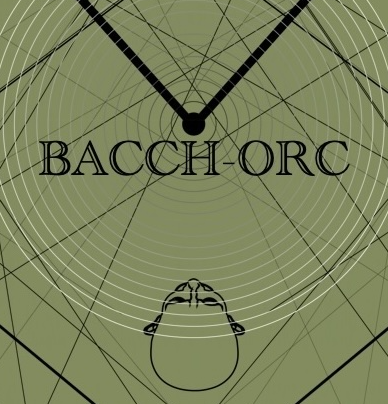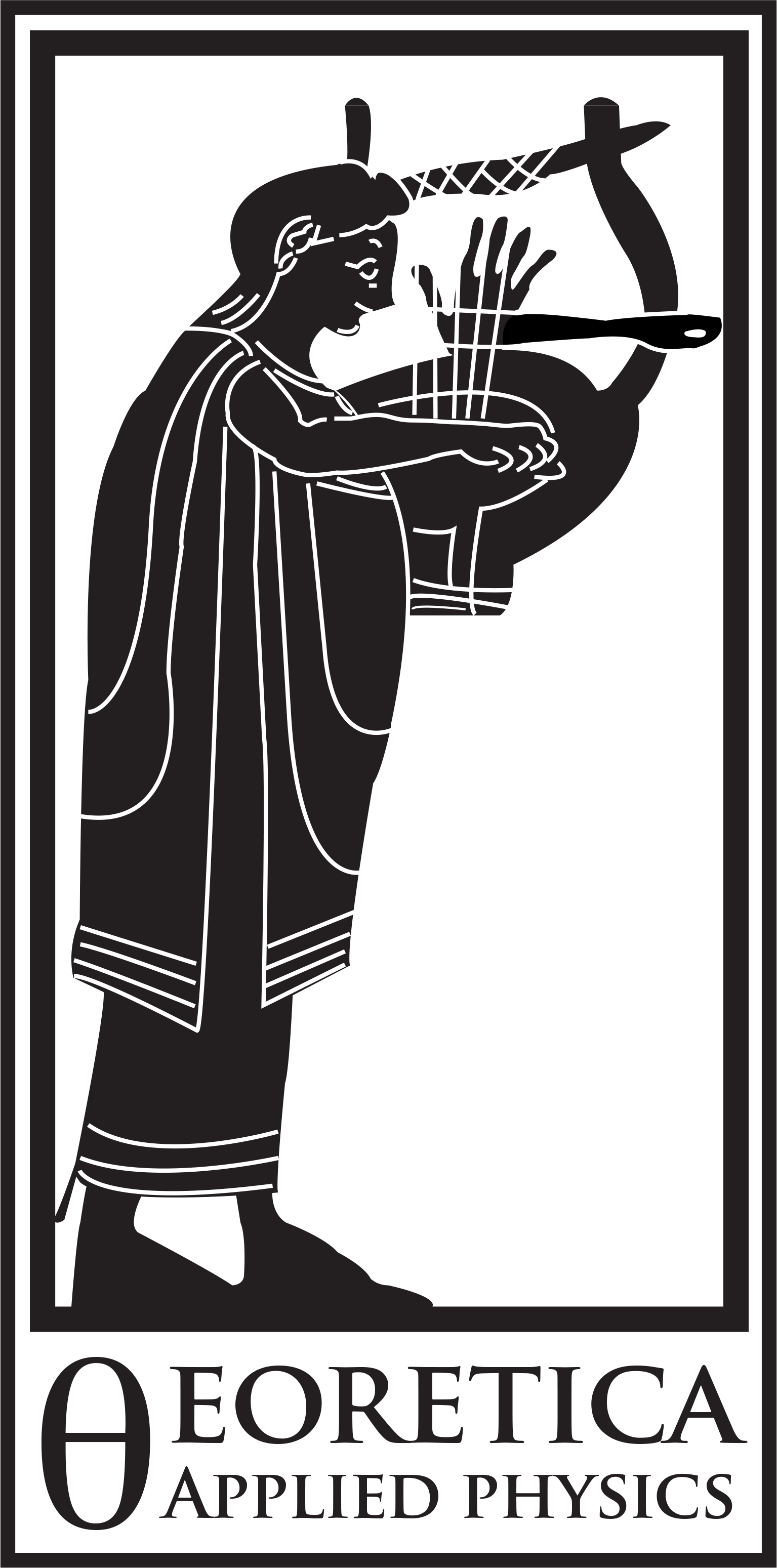BACCH-dSP is a standalone Mac application, at the heart of Theoretica's
BACCH4Mac packages, for audiophile-level 3D Audio imaging through loudspeakers and headphones. Its Pro version has advanced tools for 3D audio mixing, production, and sound field navigation.
BACCH-dSP is the most advanced stereo 3D imaging and binaural audio processing tool available today, and is used by
- Audiophiles seeking true 3D imaging of existing stereo recordings through 2-channel loudspeaker systems.
- Audiophiles wishing to emulate their 2-channel loudspeaker systems over headphones.
- Musicians, composers, and audio professionals interested in binaural audio mixing and production.
- Researchers, developers, and educators exploring applications of higher-order ambisonics (HOA) at the cutting edge of audio technology.
BACCH-dSP incorporates many techniques, algorithms, and methods that have only recently evolved out of the research laboratory, and allows for the construction and rendering of stereo 3D audio images with breathtaking realism.
It is the result of many years of continuous development by Professor Edgar Choueiri, President of Theoretica Applied Physics and Director of Princeton University’s 3D Audio and Applied Acoustics Laboratory.
BACCH-dSP can be easily configured as a parallel processor for the leading DAW applications (e.g. ProTools, Logic Pro, Ableton Live, etc.) or as a standalone application for processing audio from audio files, and audio from audio file players (Roon, iTunes, JRiver, etc...) and streaming services (Tidal, Spotify, etc...).
The wide functionality of the BACCH-dSP includes the following main features:
- Quick and easy design of individualized BACCH® filters for rendering binaural audio (and regular stereo recordings) in full 3D over a pair of loudspeakers.
- Quick and easy design of individualized BACCH-hp filters for rendering highly externalized 3D audio from headphones.
- Advanced head-tracking for real-time dynamic sweet spot adjustment for seamless 3D audio over a wide range of listener locations.
- The powerful BACCH-3dm mixer for precise mixing of audio sources in 3D space.
- Quick and intuitive design of 3D trajectories for moving sources in 3D space.
- Extensive automation integration with the leading DAWs.
- Powerful Higher-Order-Ambisonics-to-binaural rendering and 3D soundfield navigation.
- 2-band and 3-band crossover network with 2nd and 4th order Linkwitz-Riley filters.
- Diagnostics and measurement tools for binaural audio.
- The most advanced room correction technology available today.


